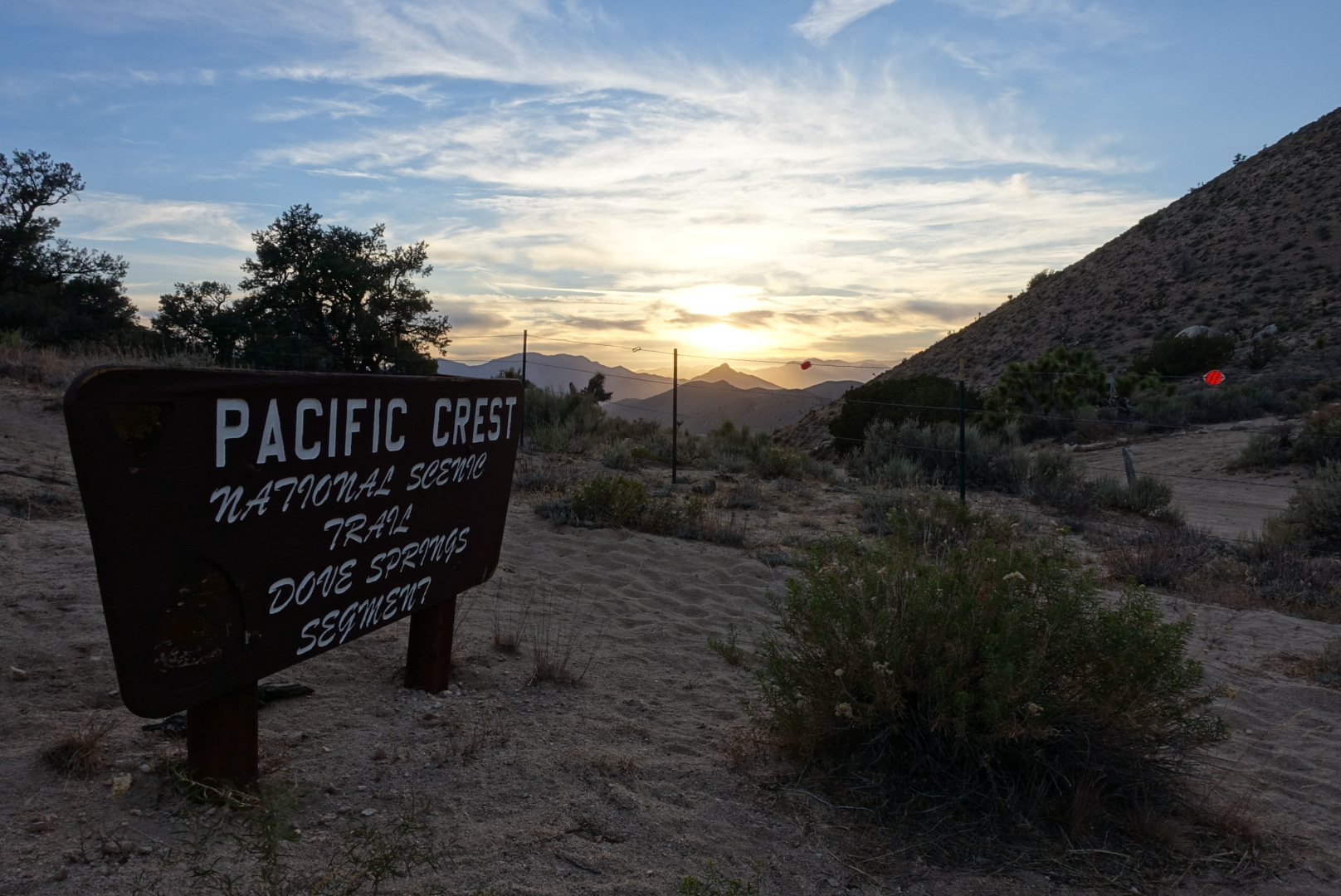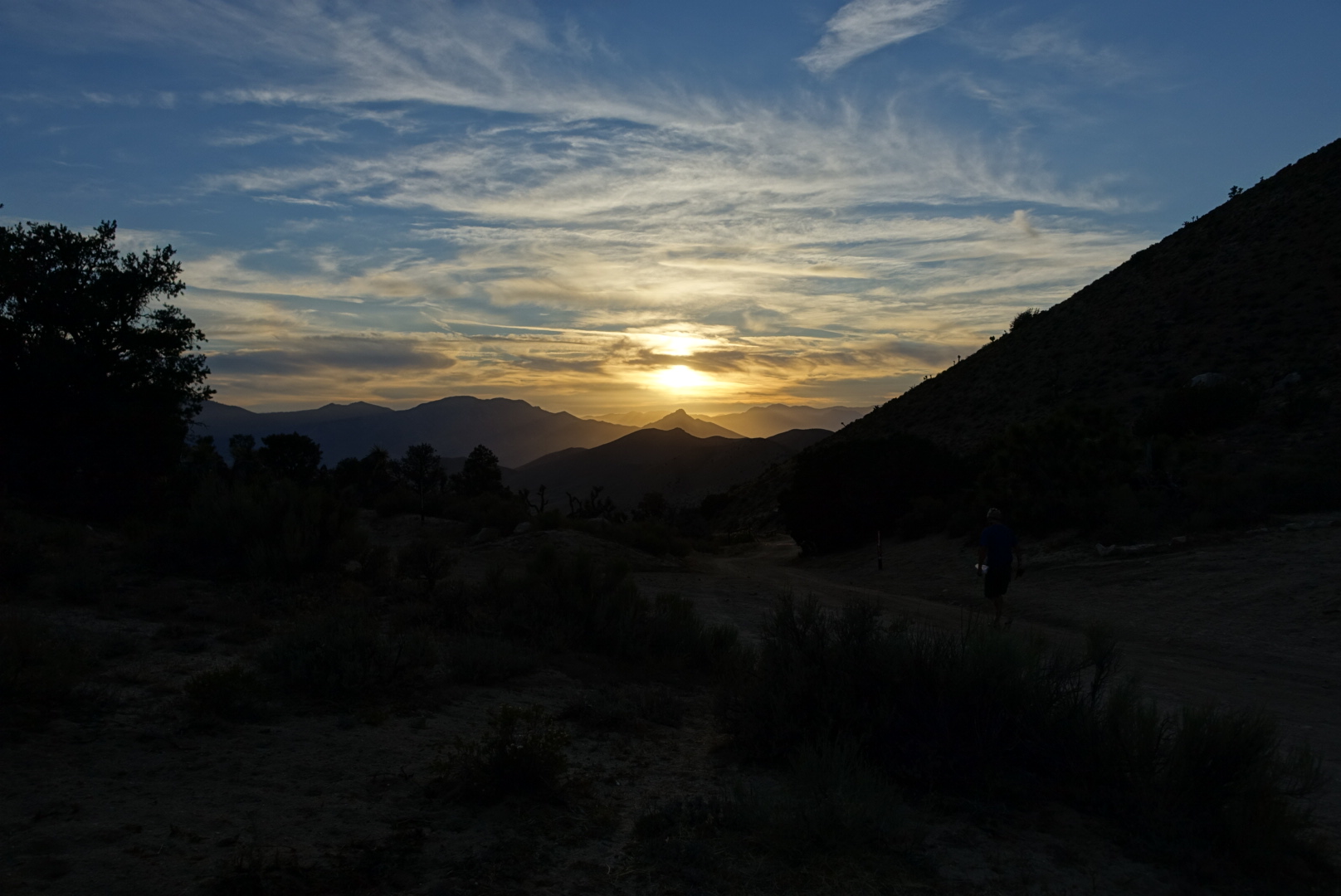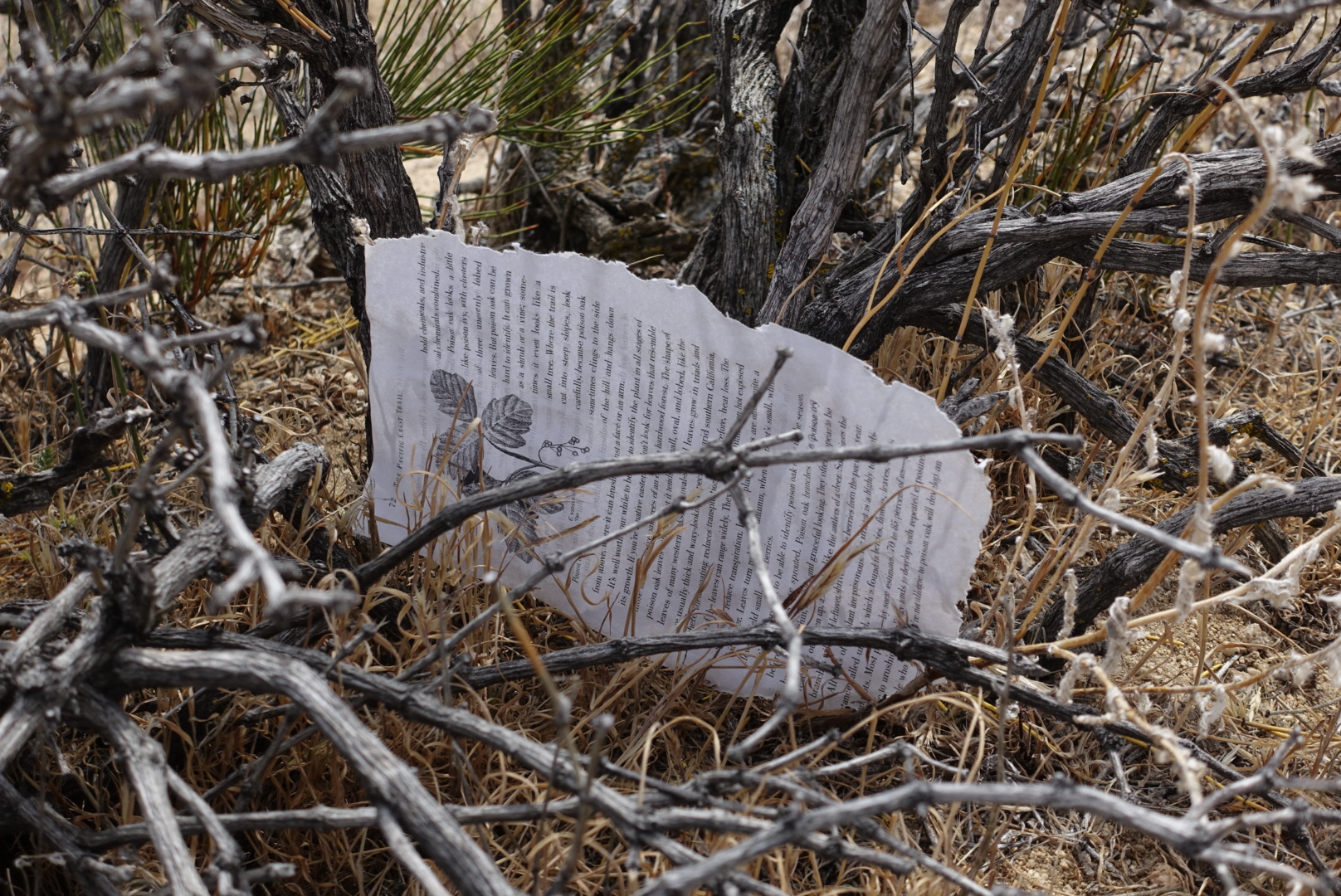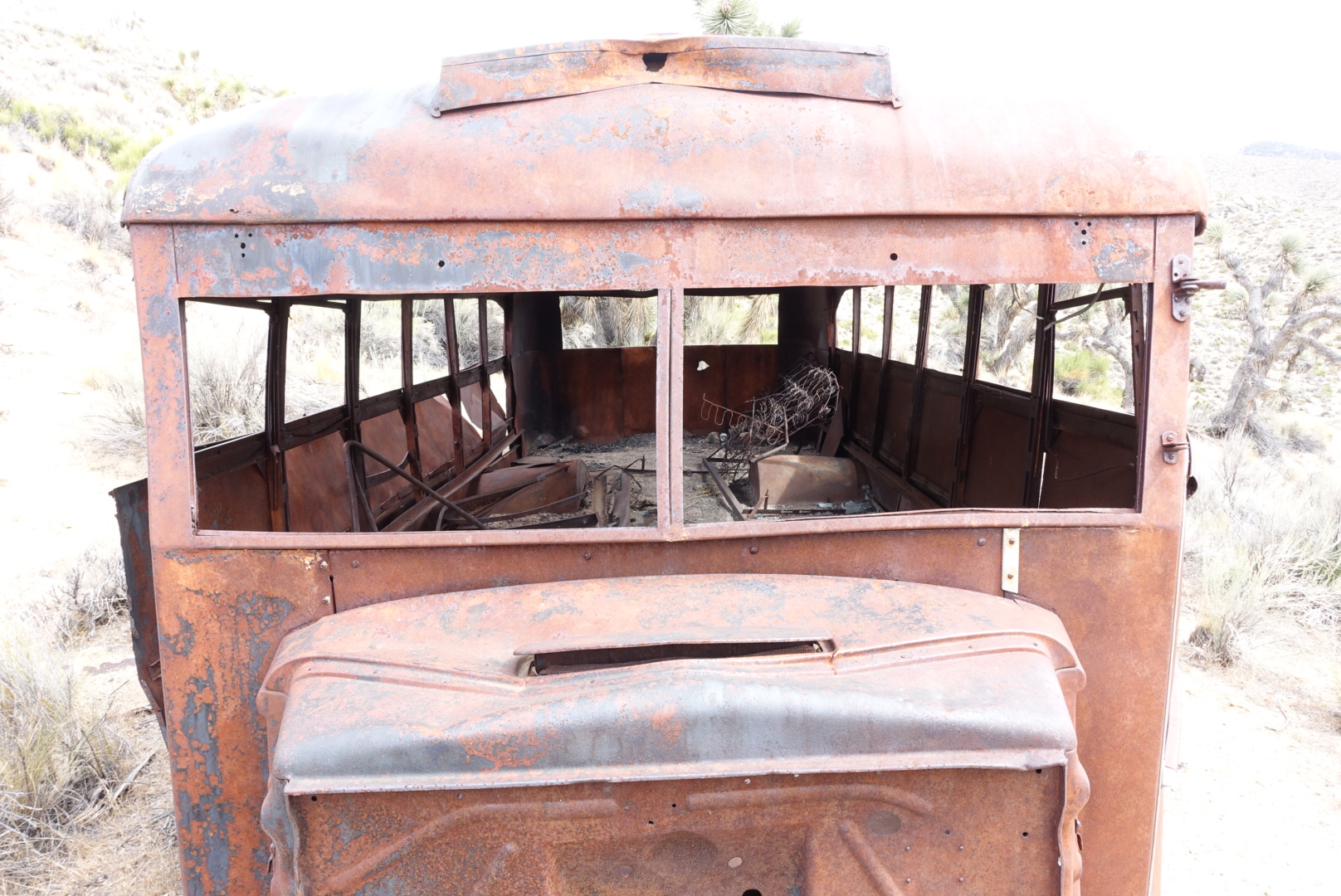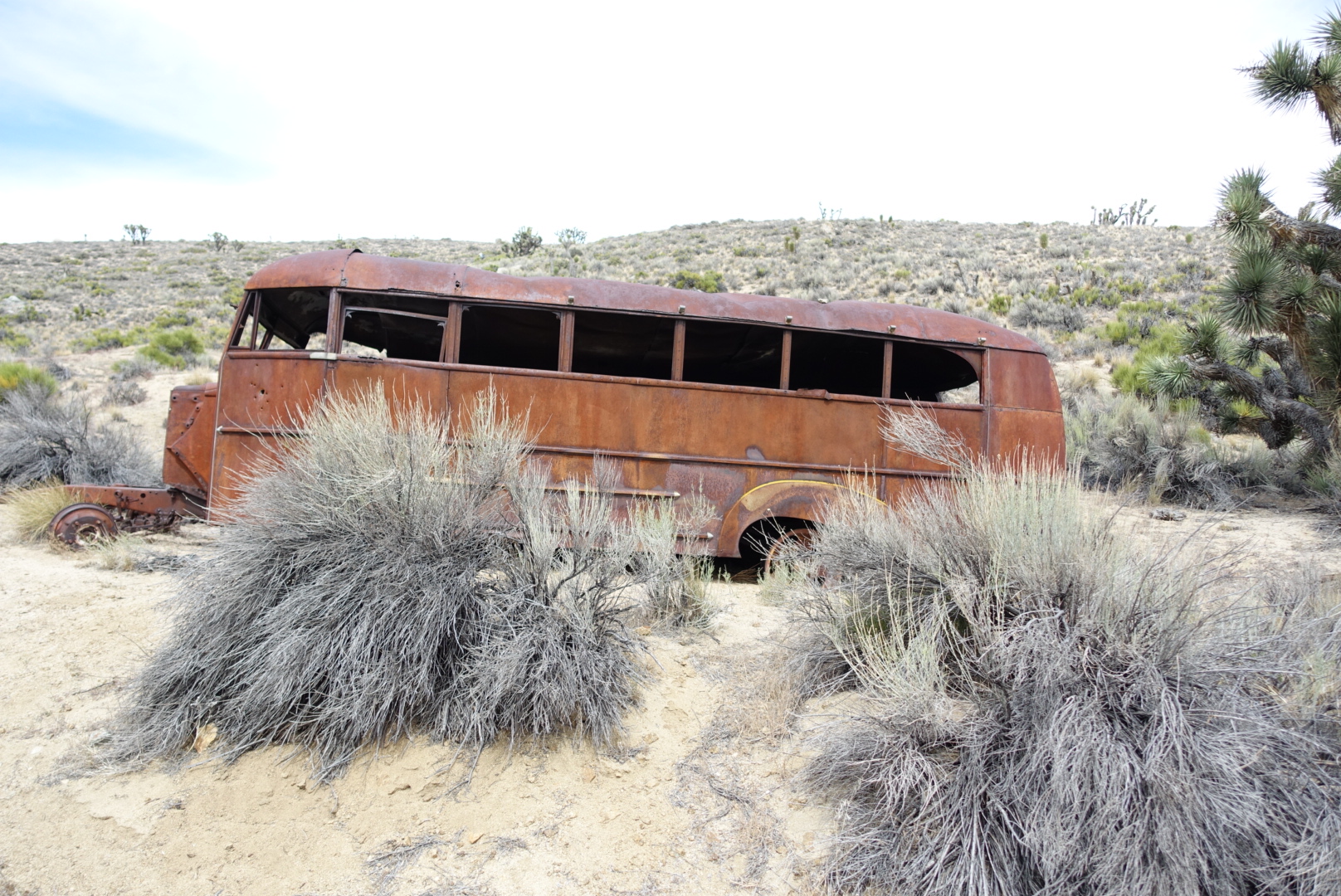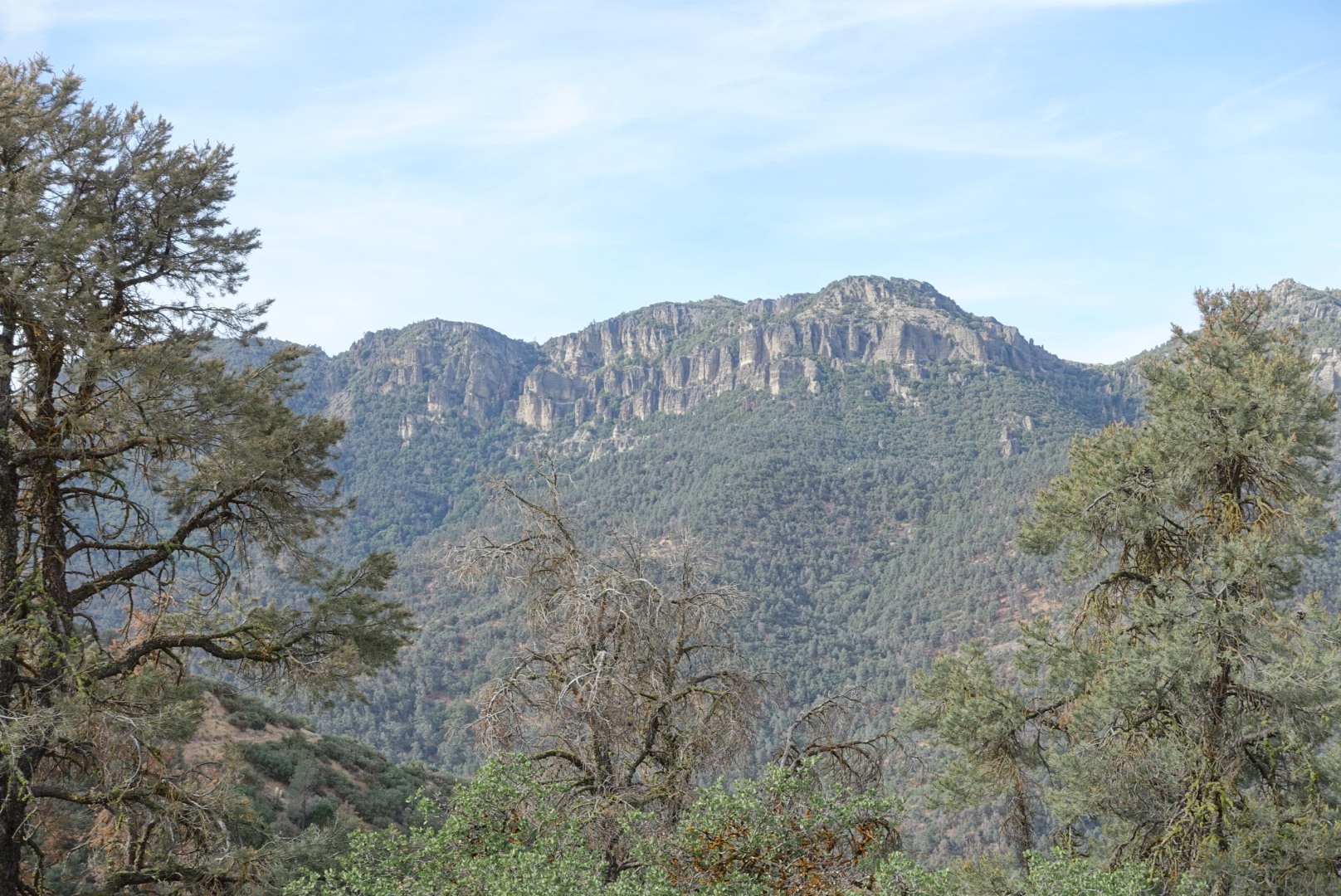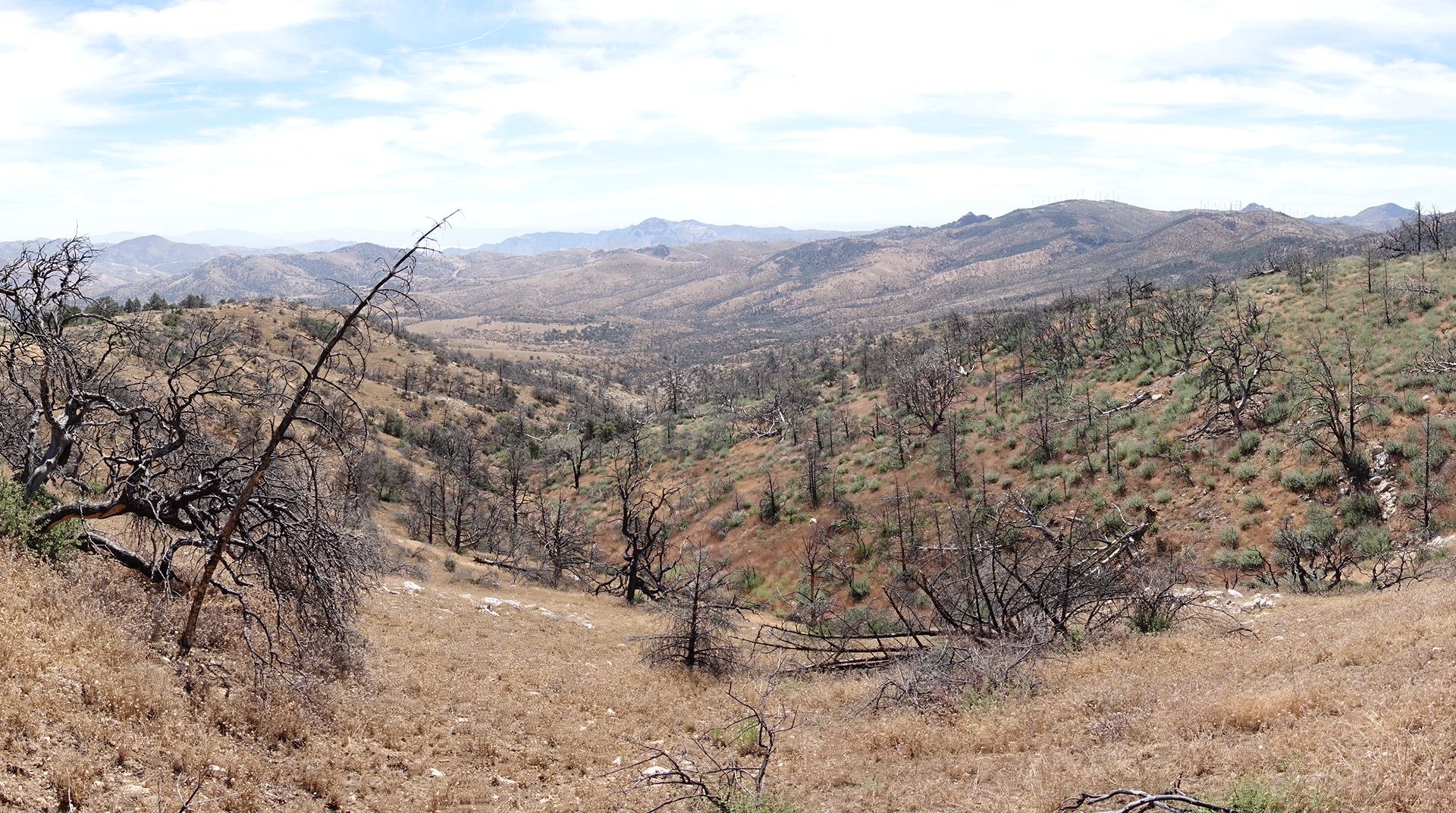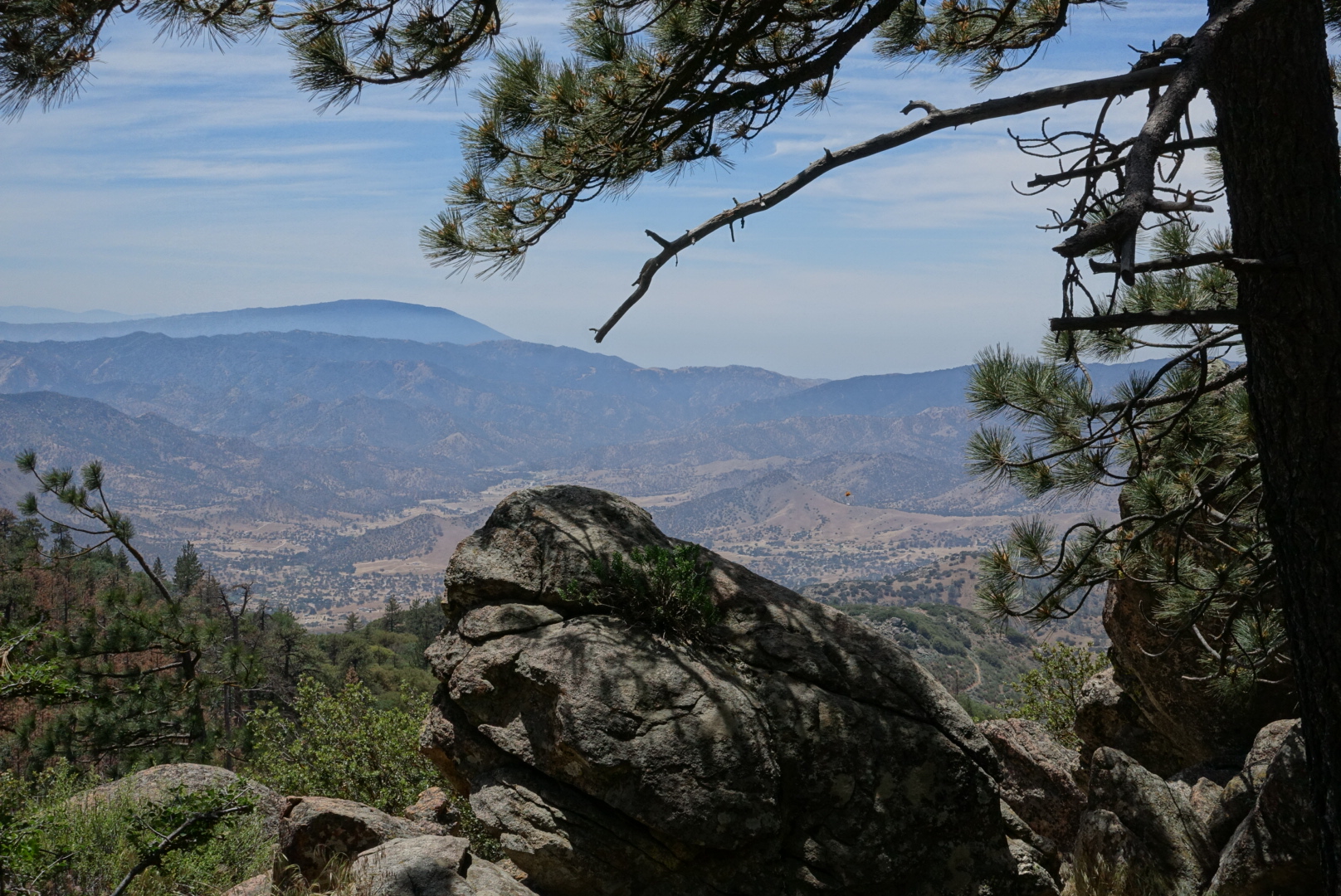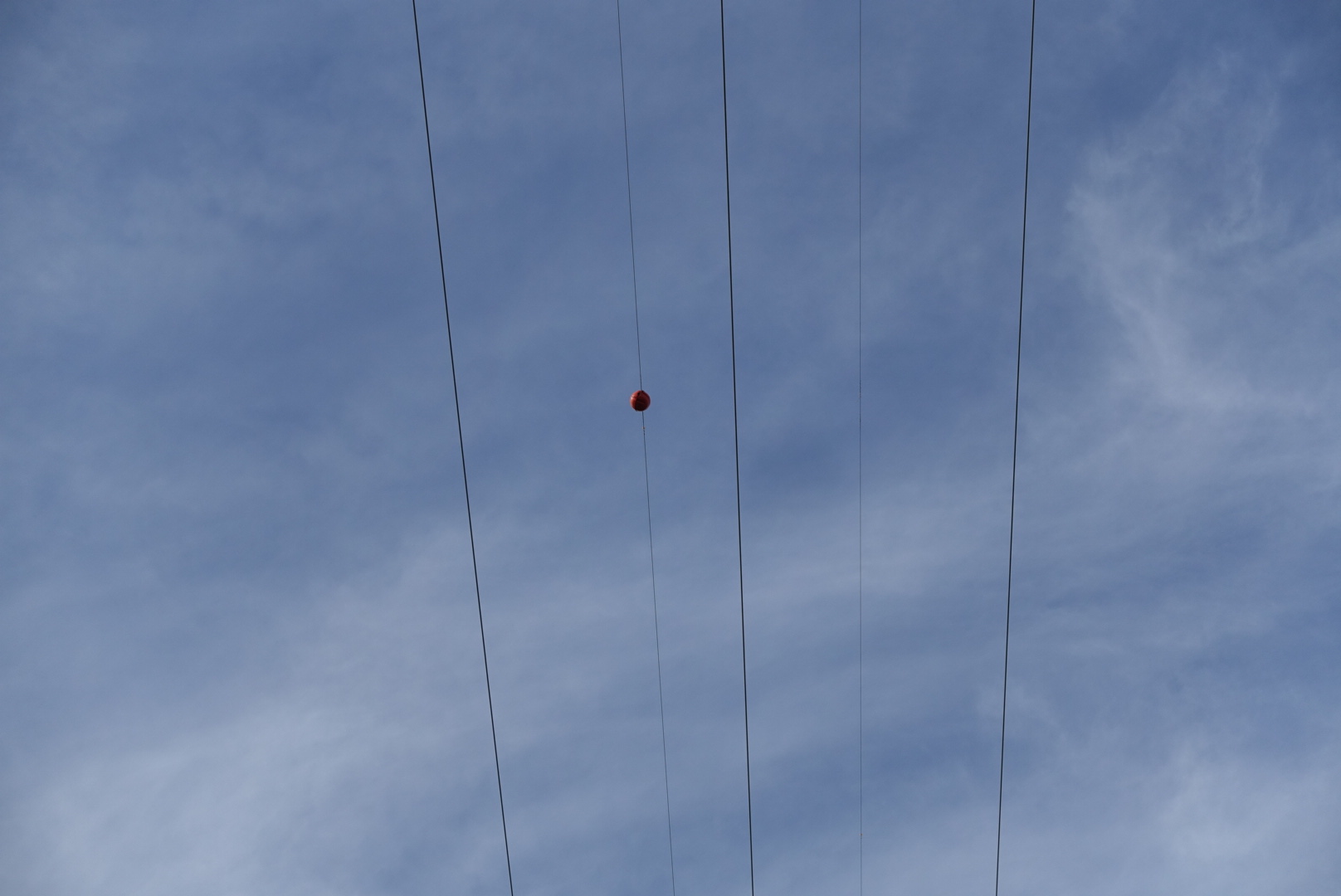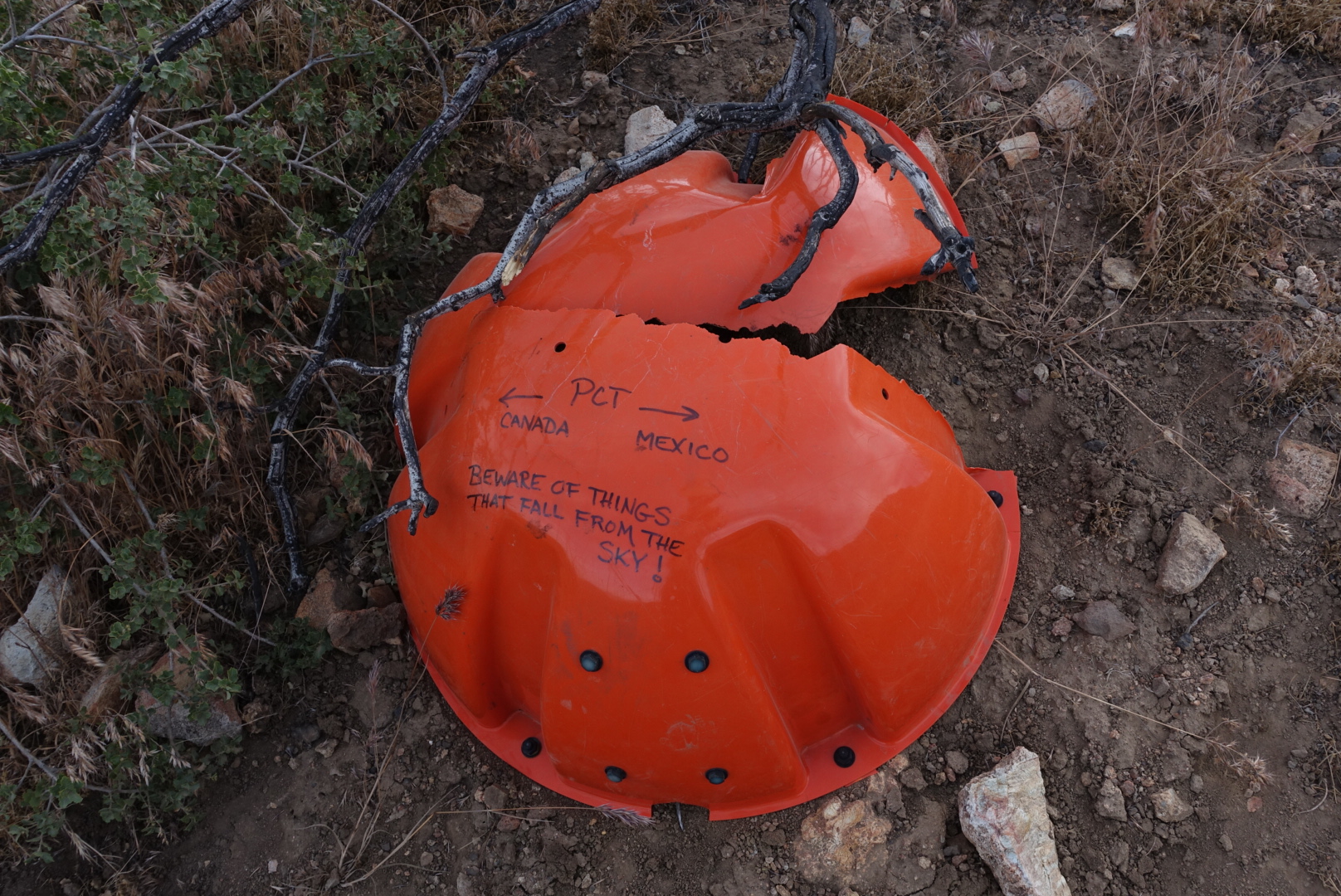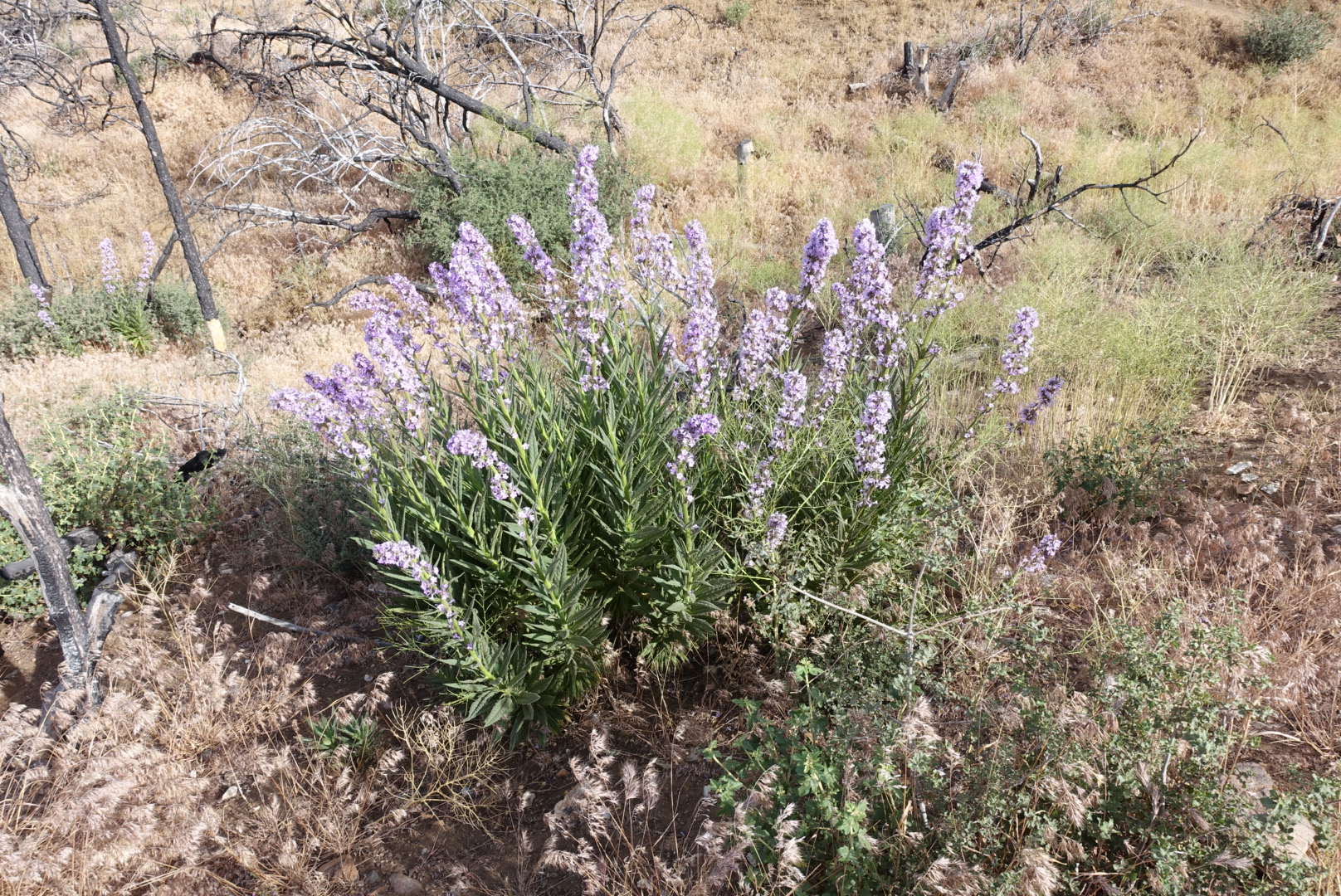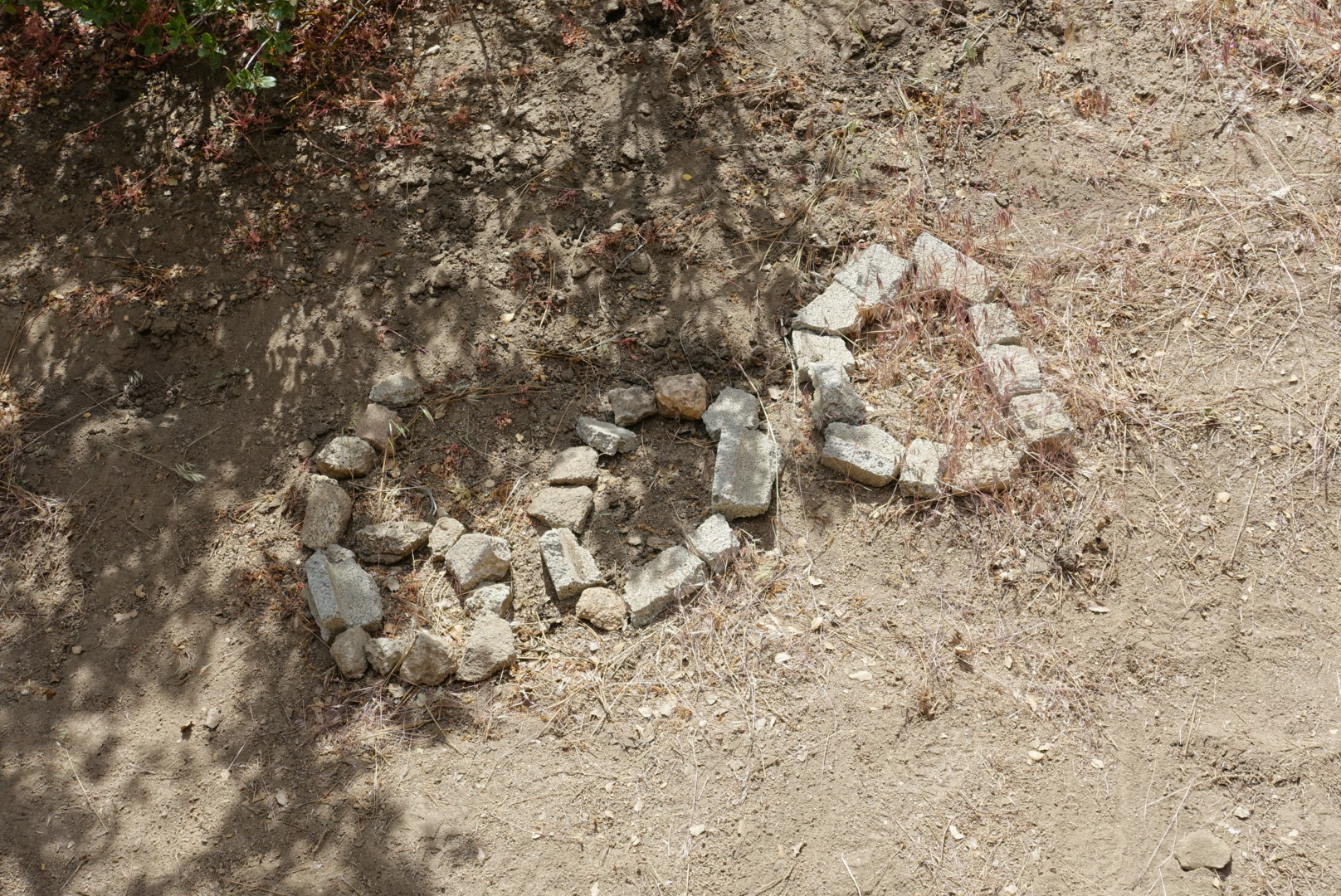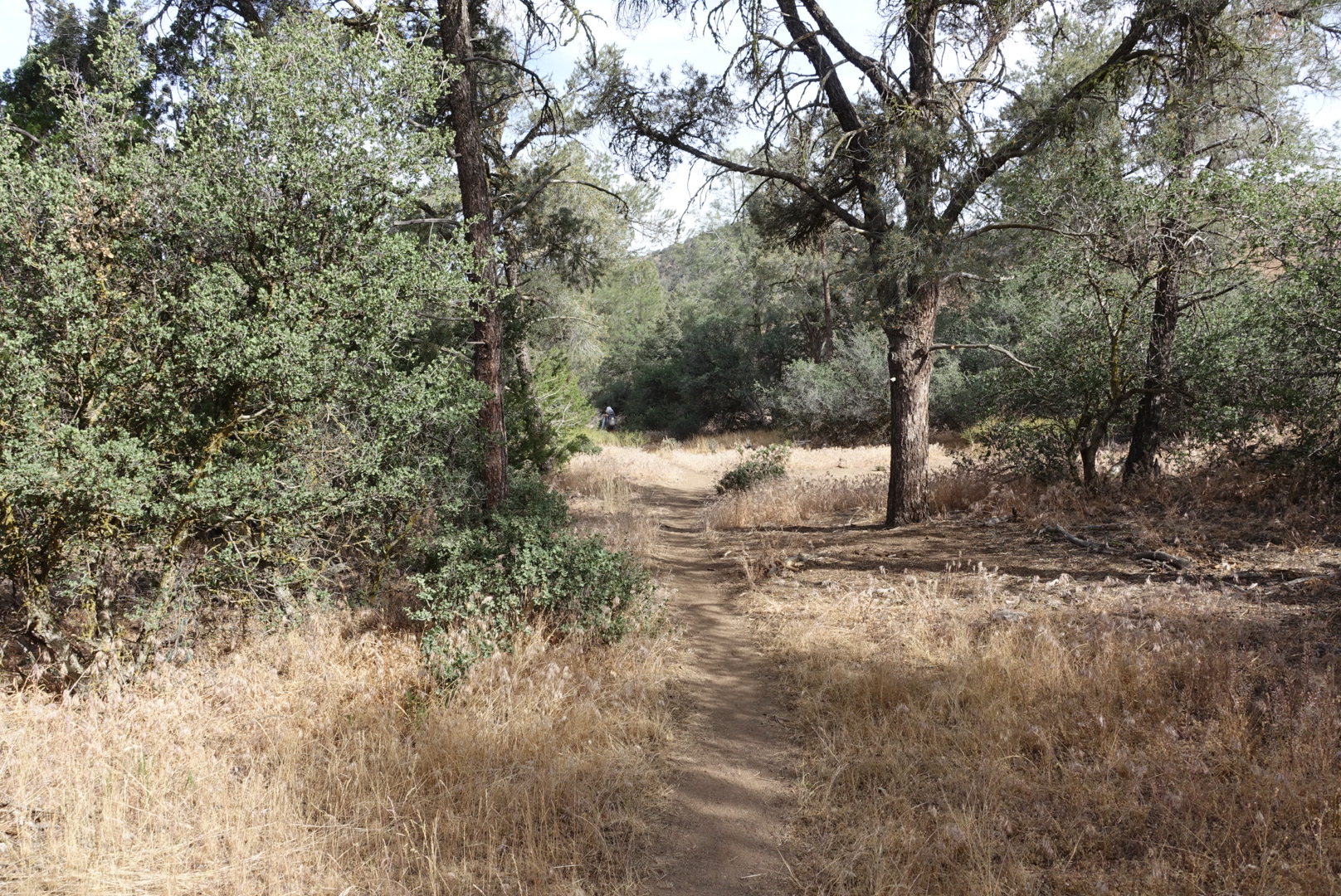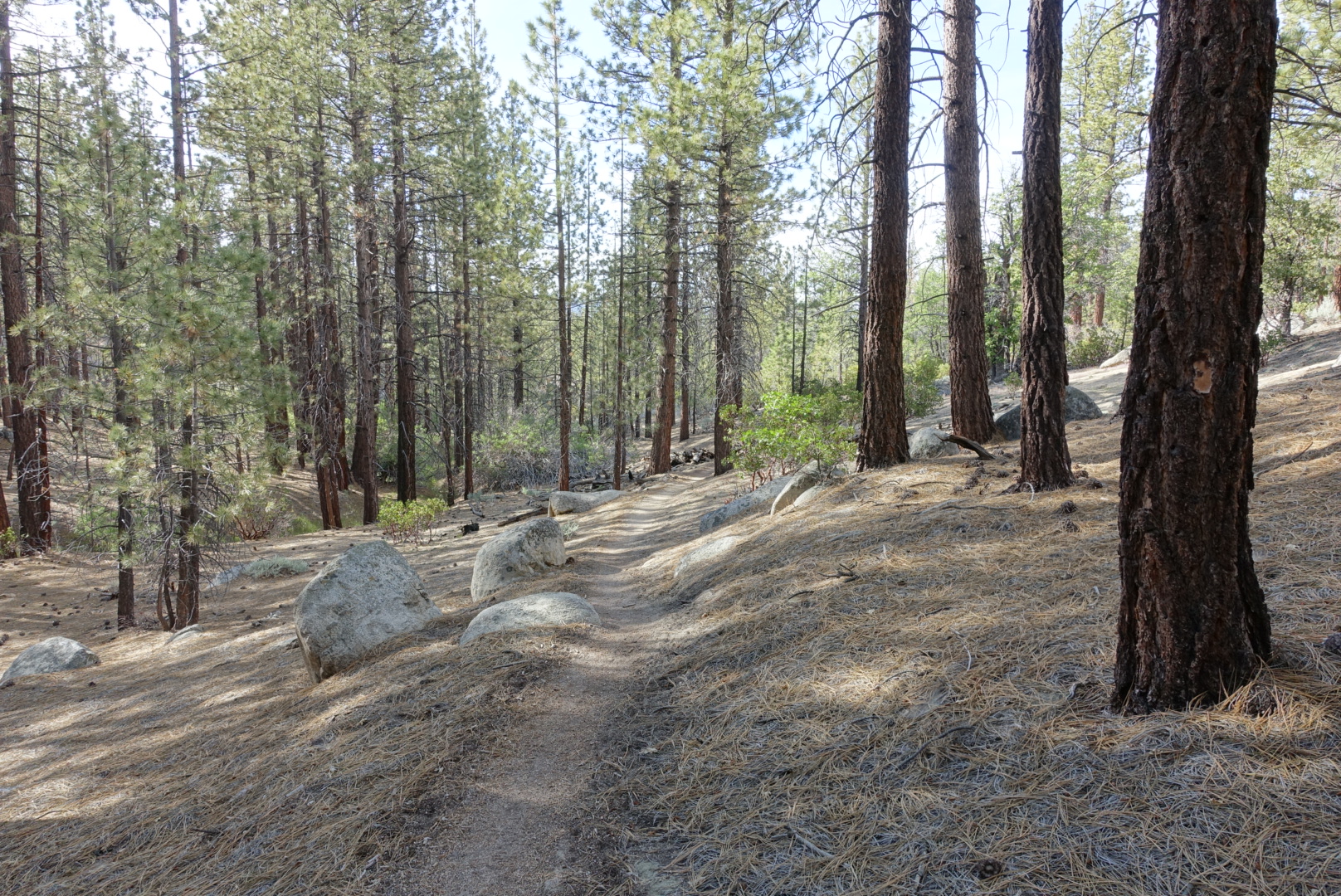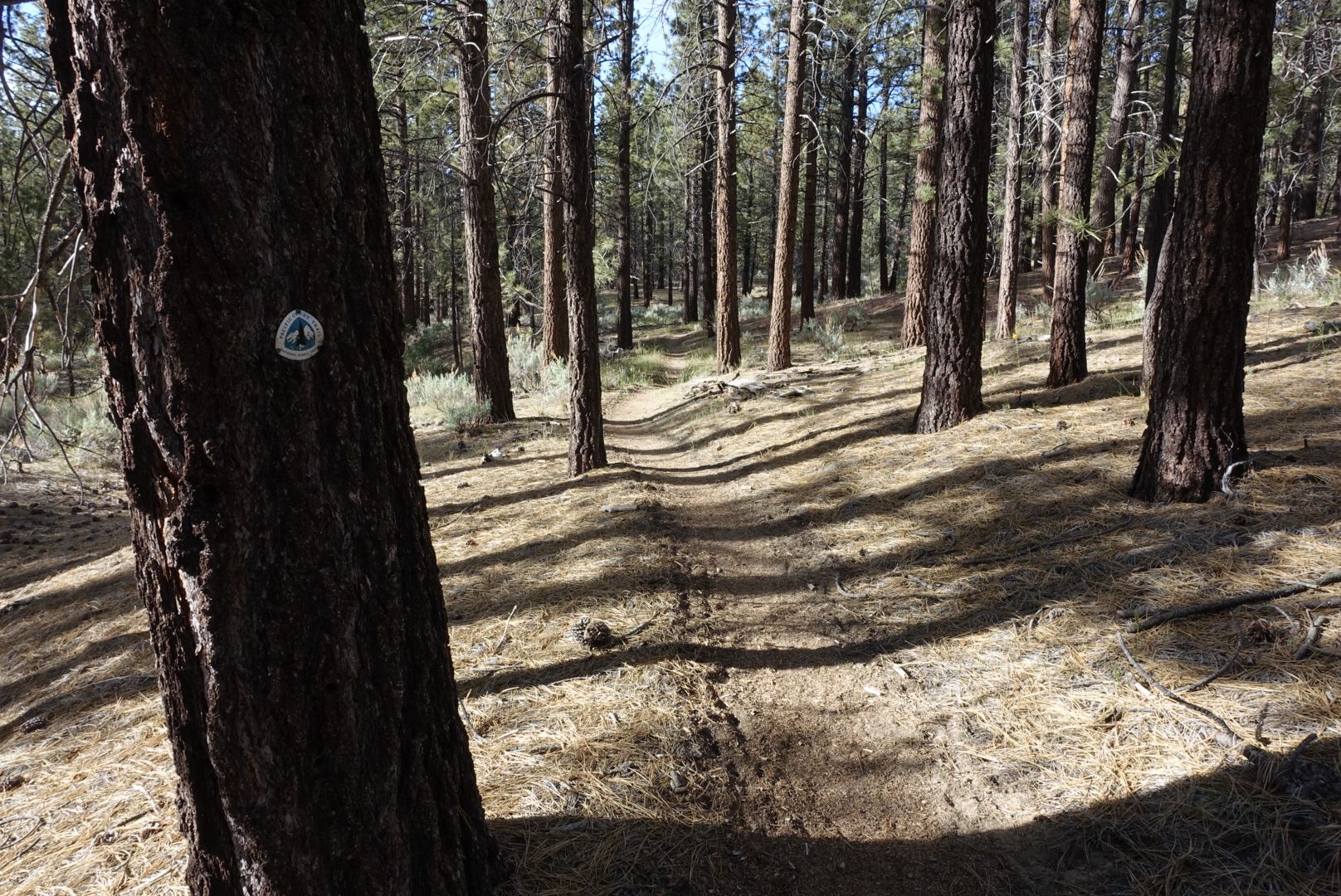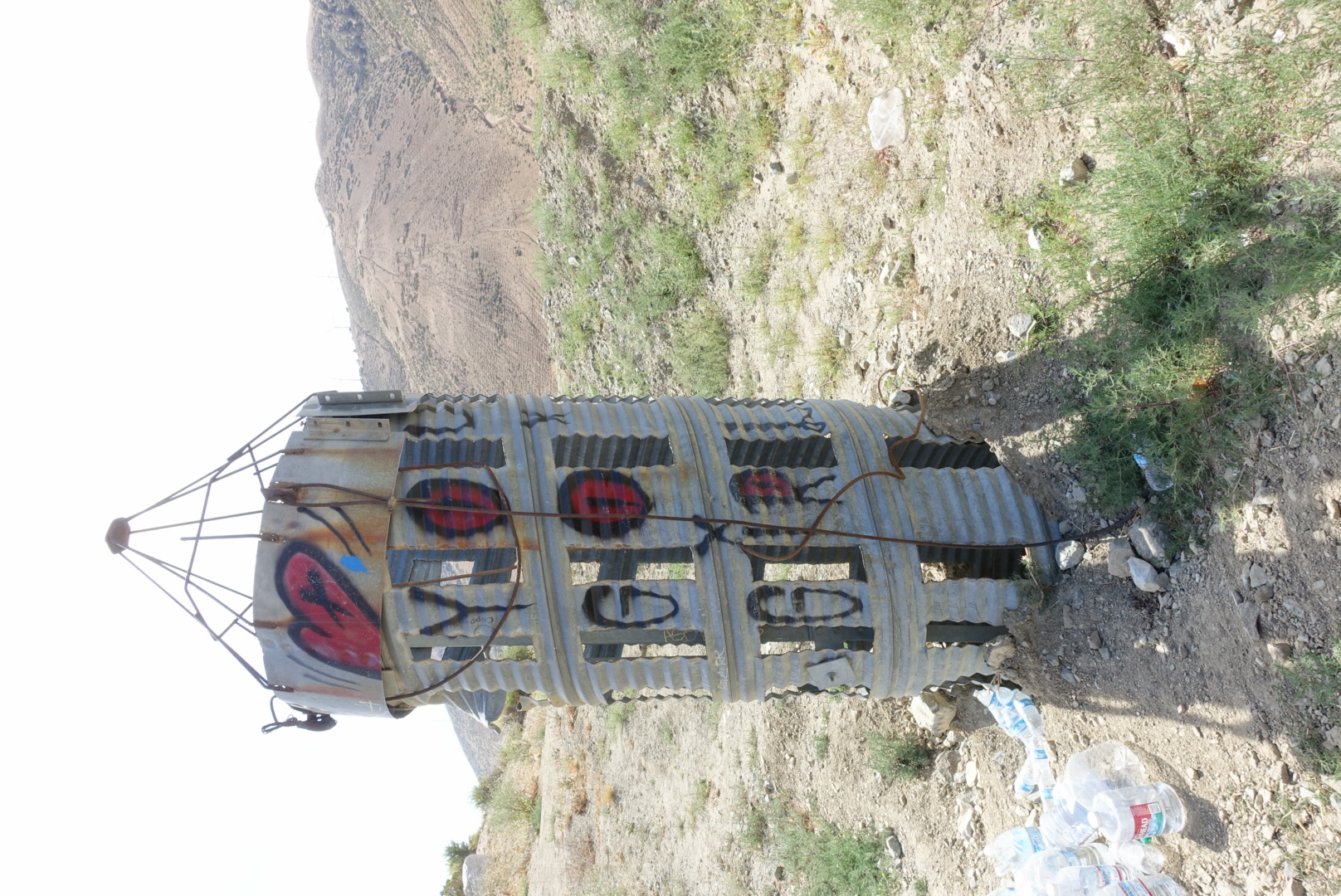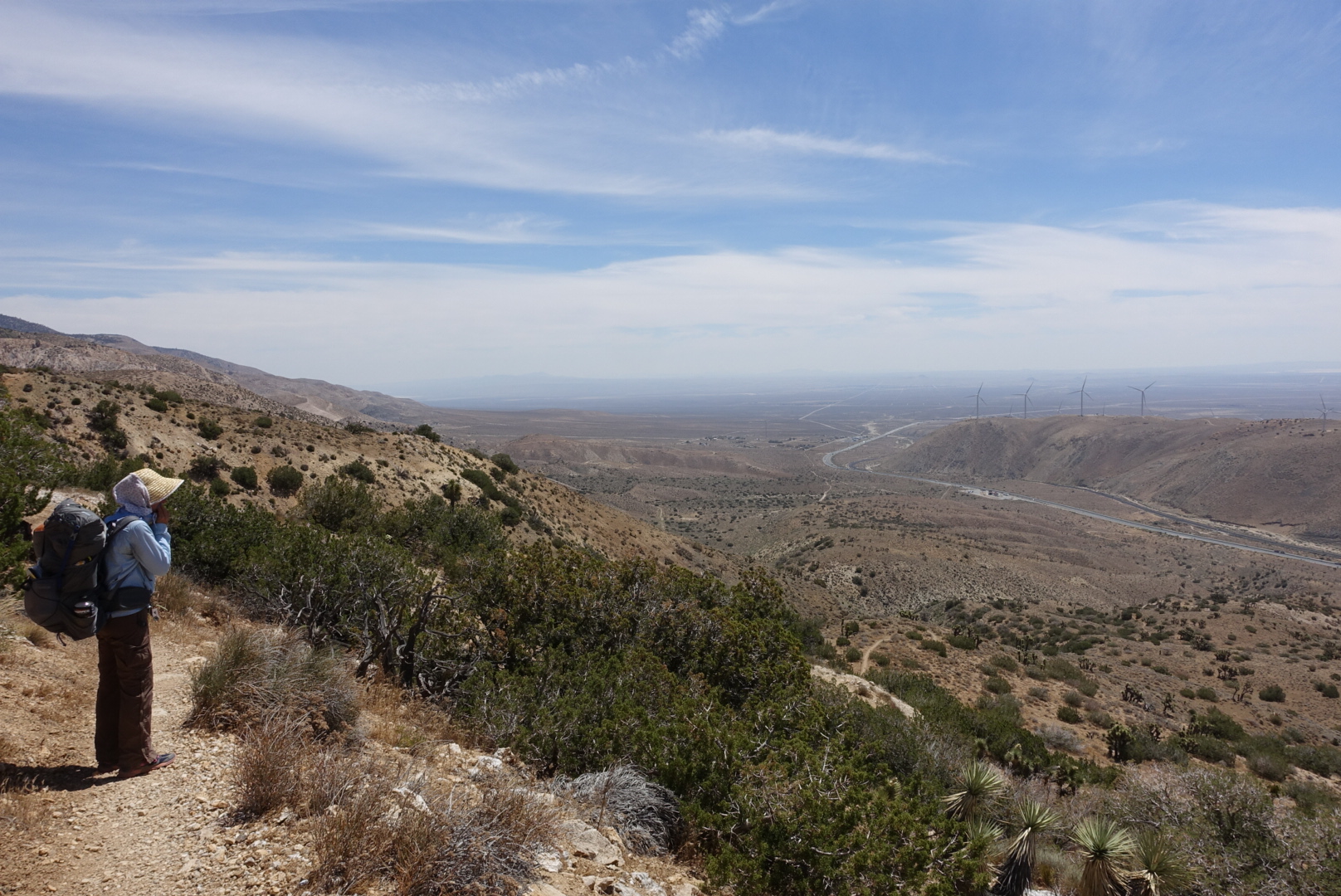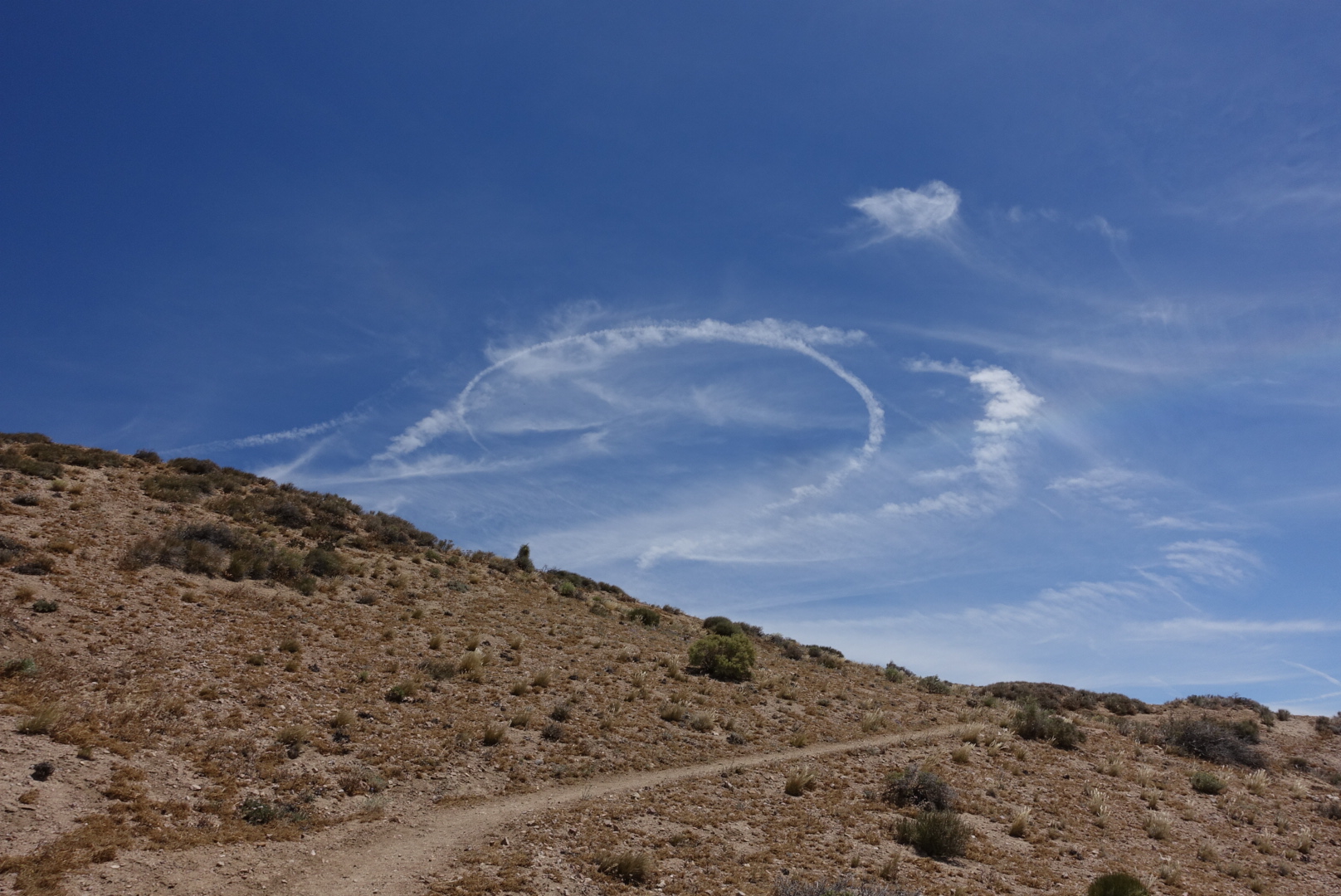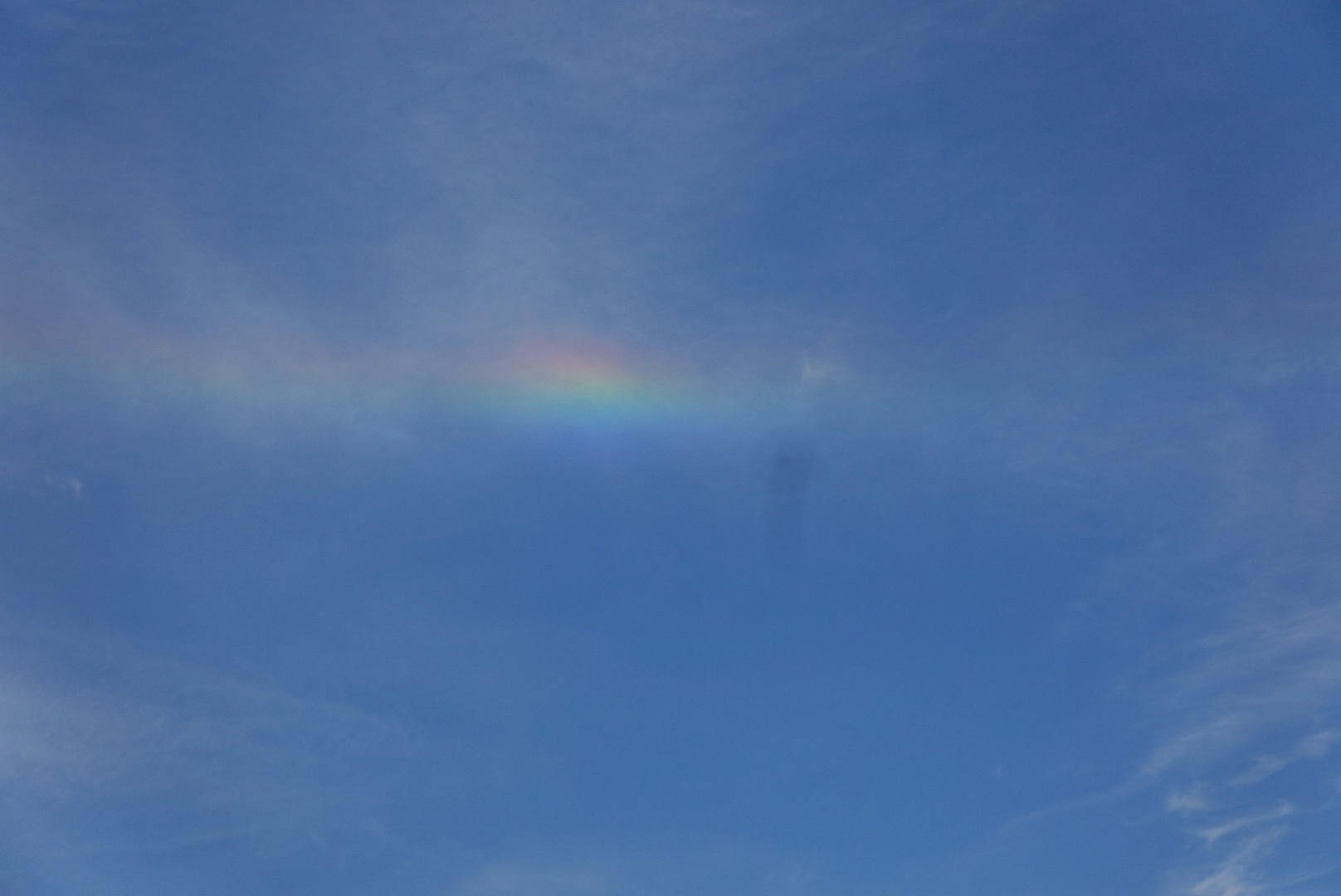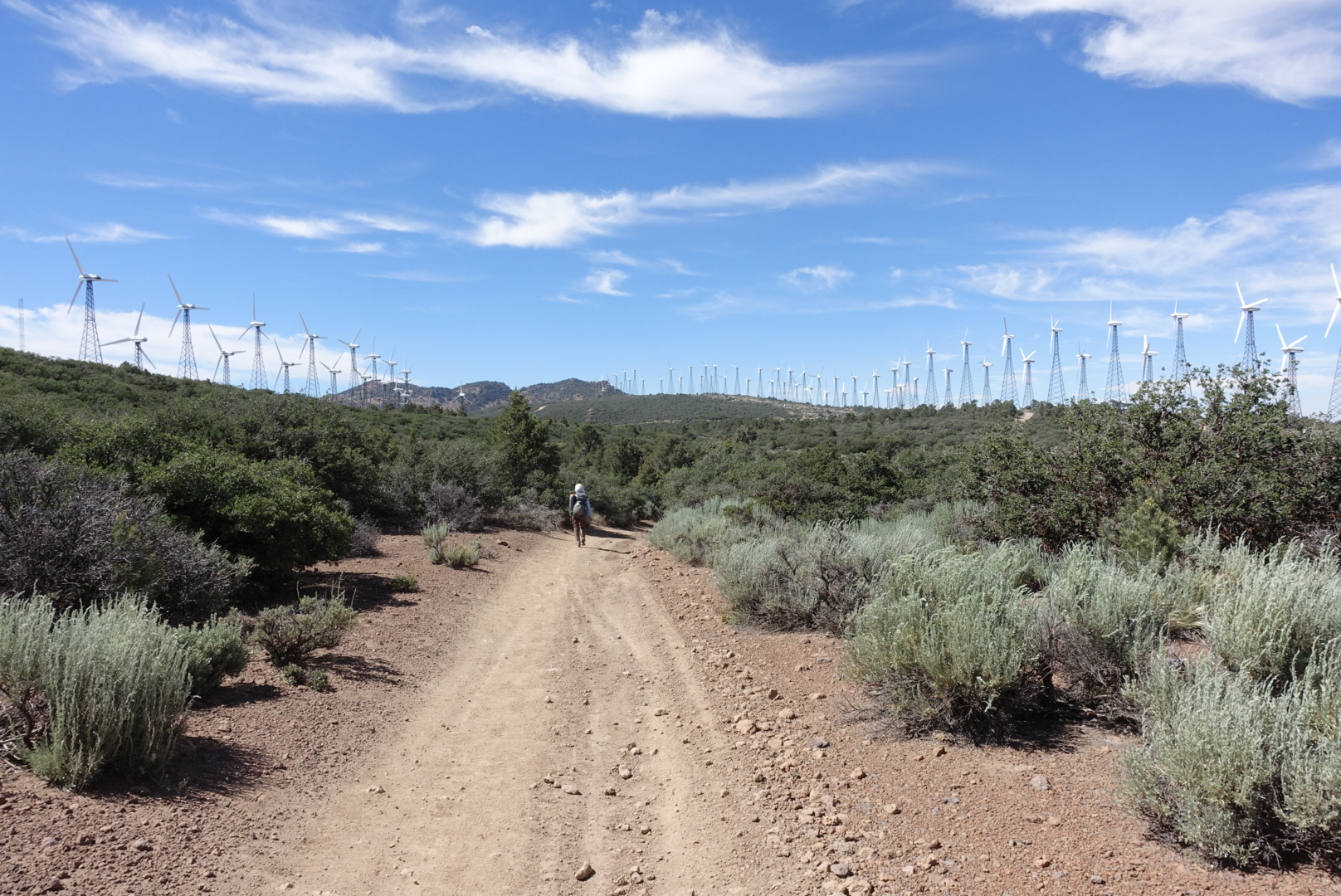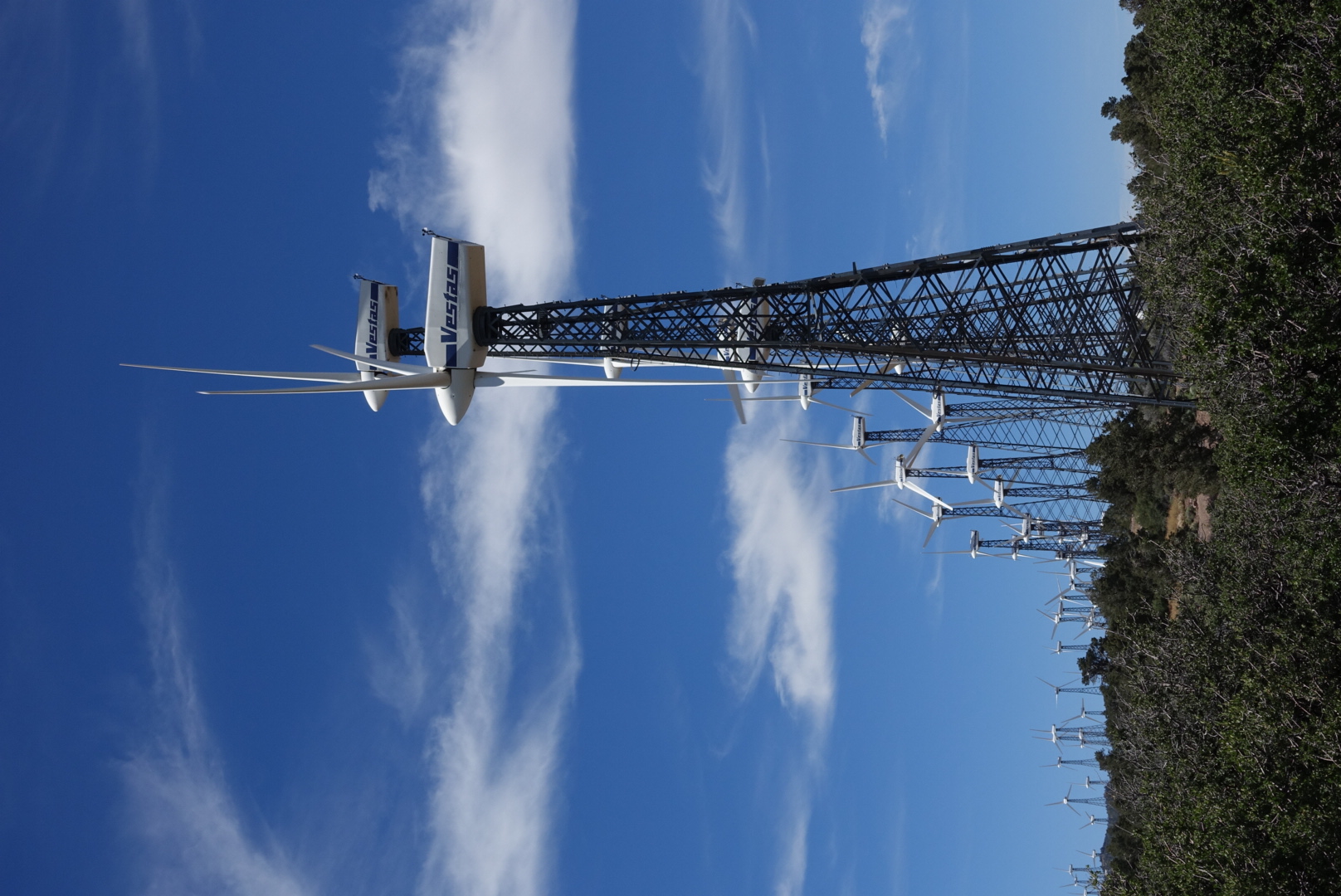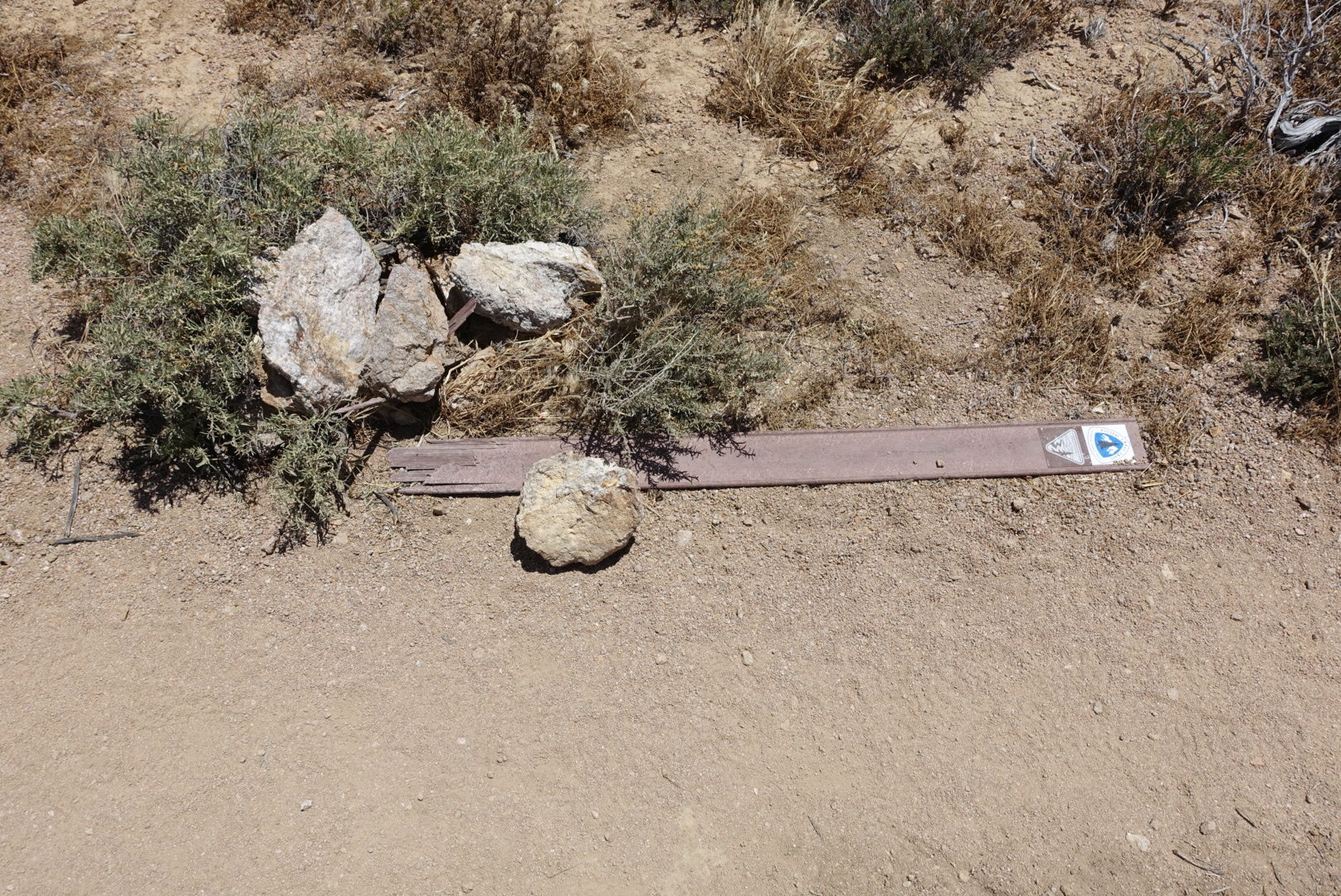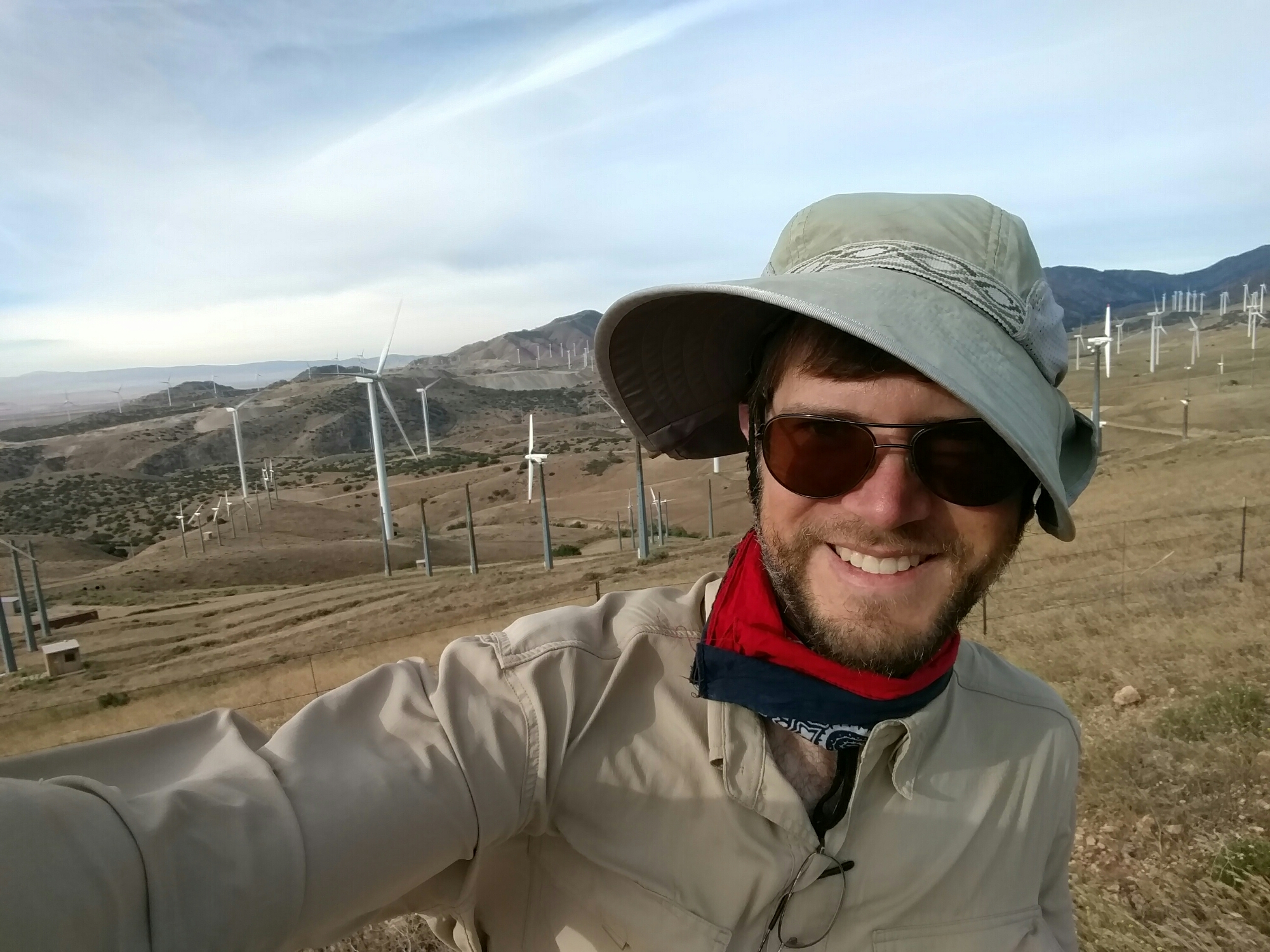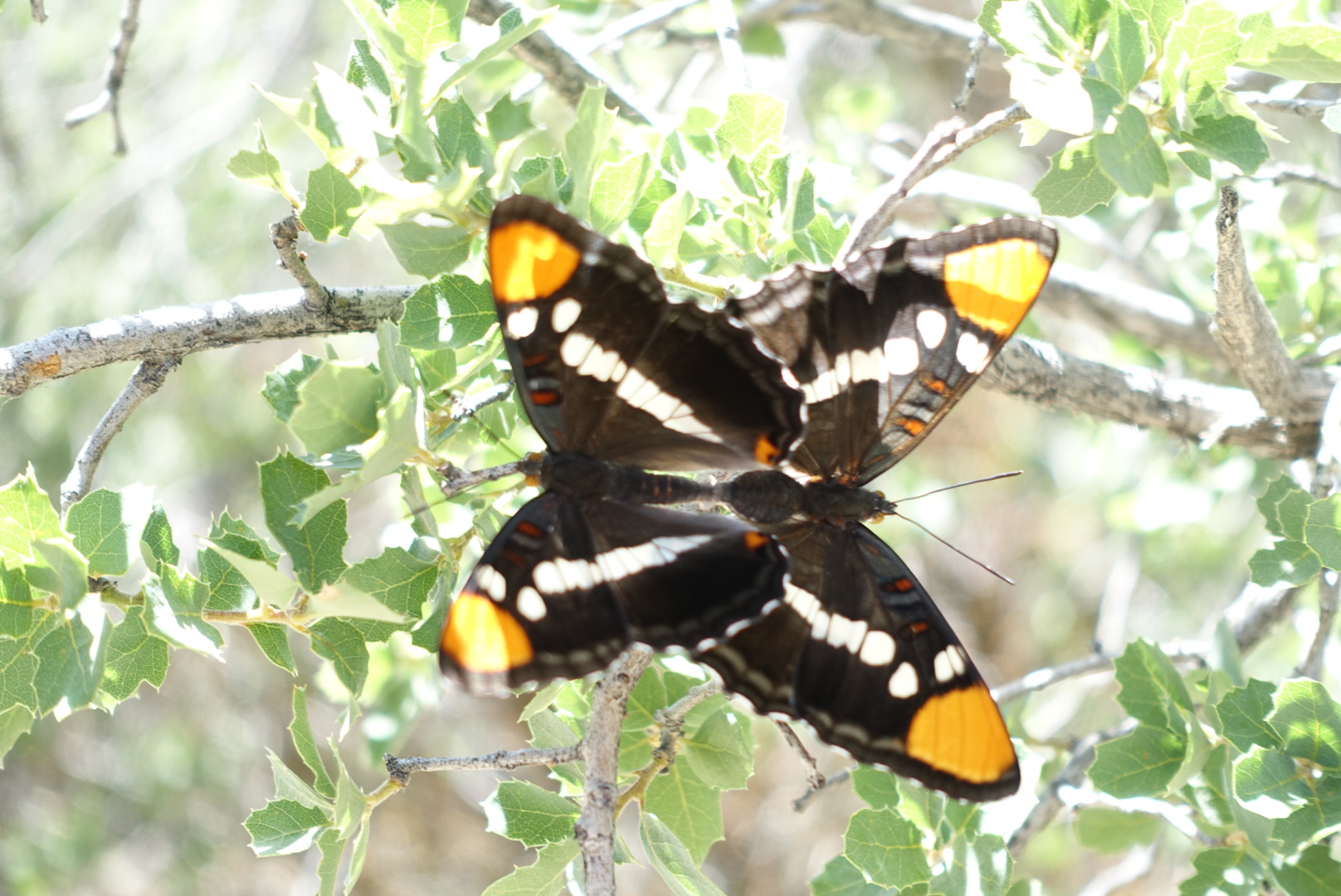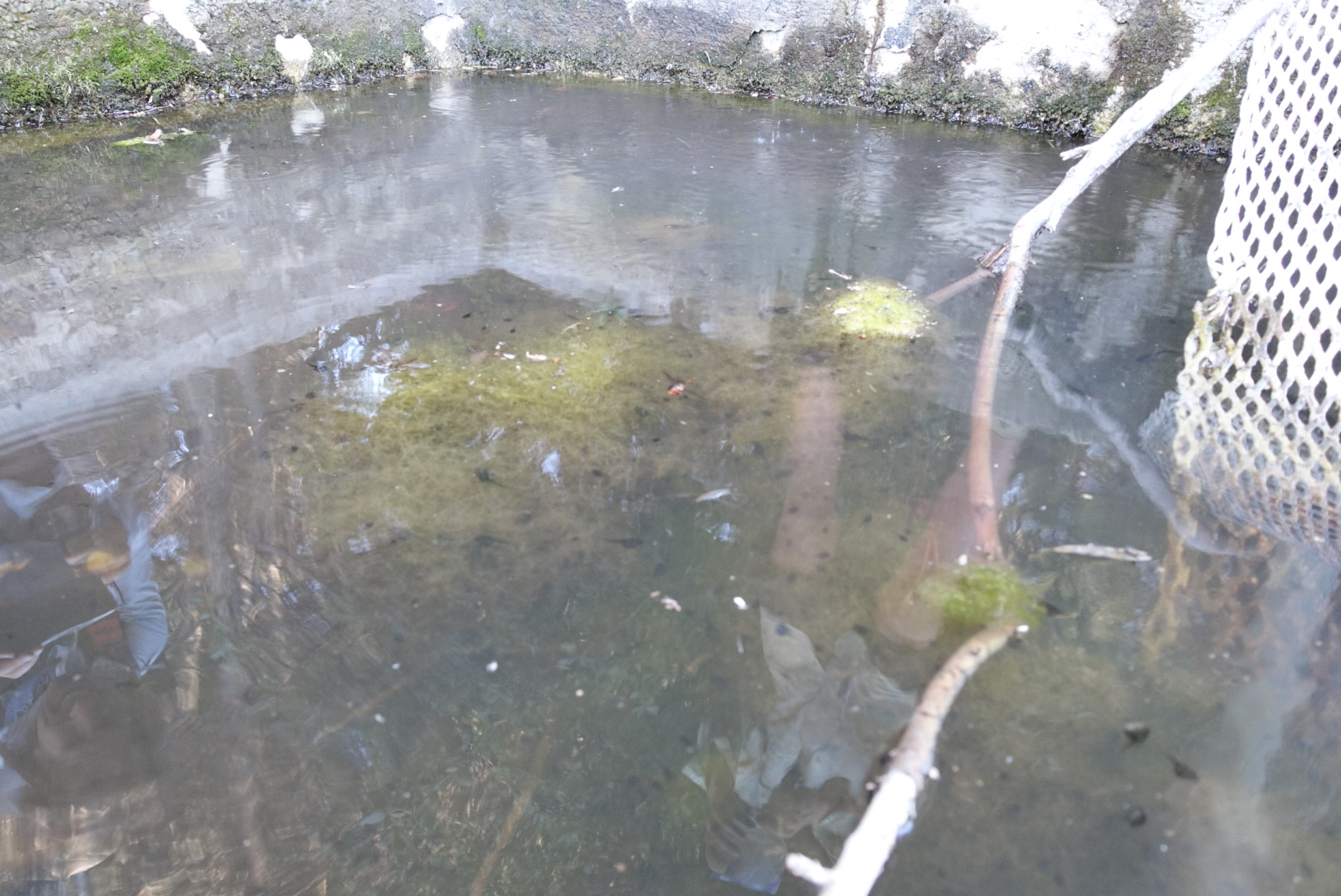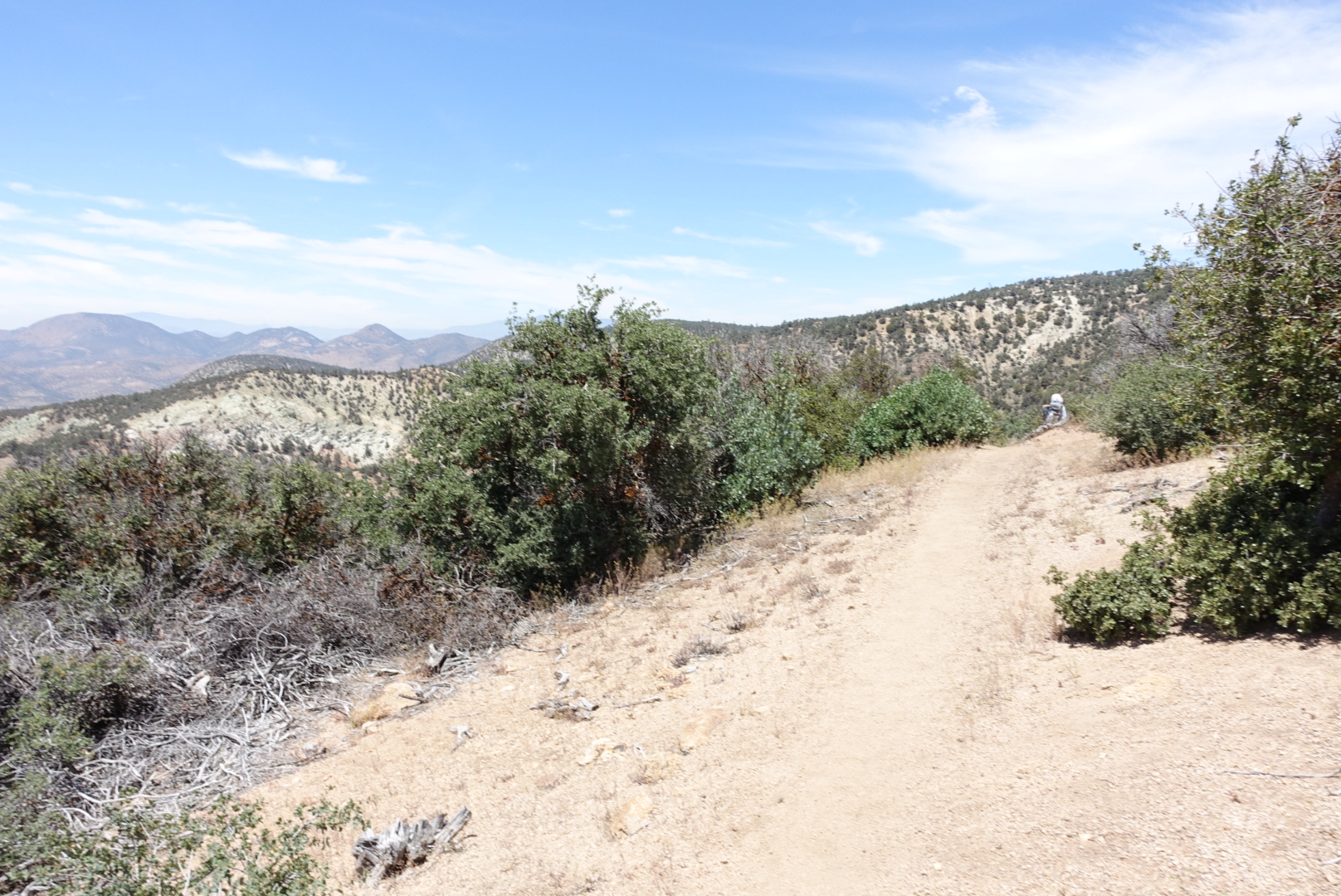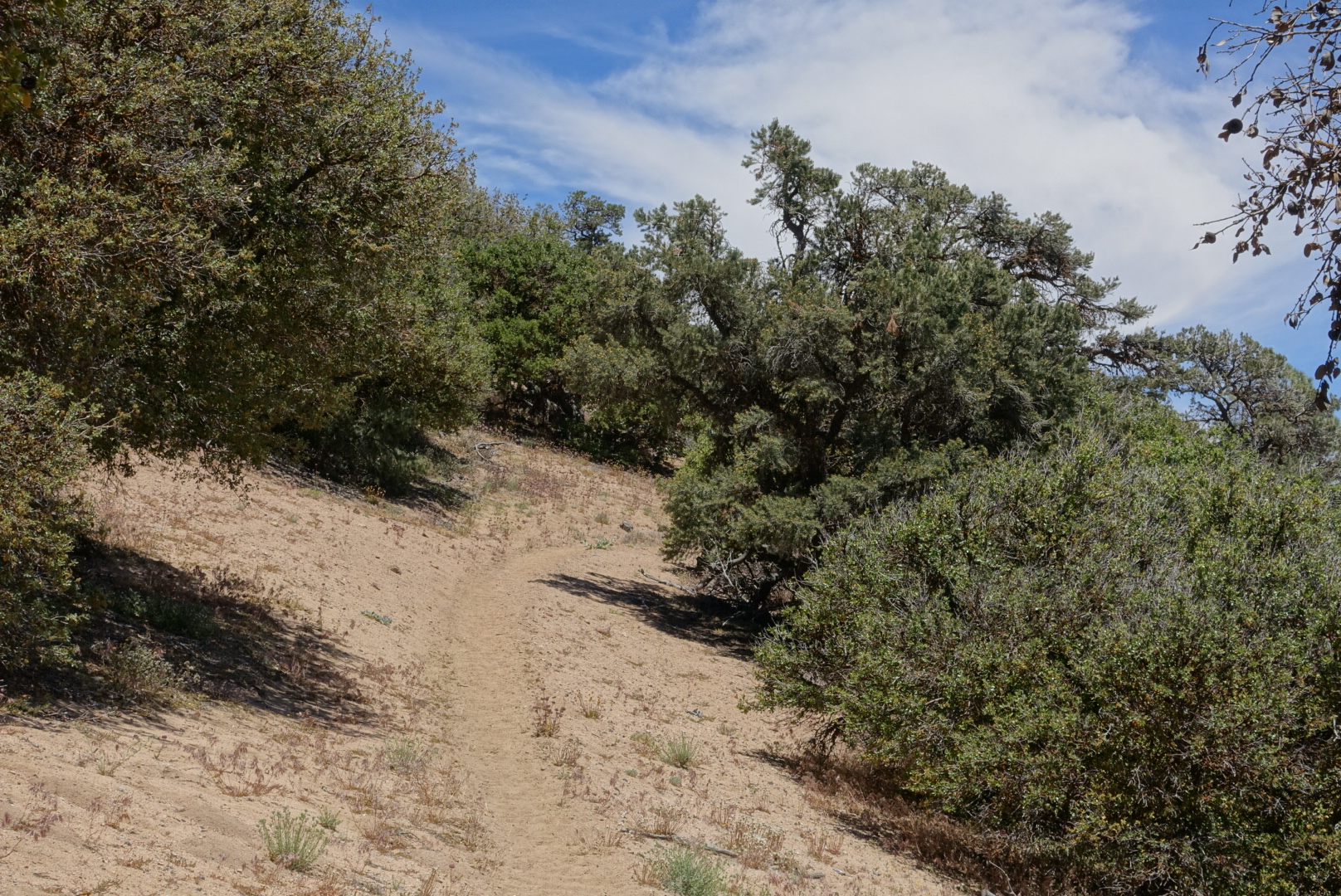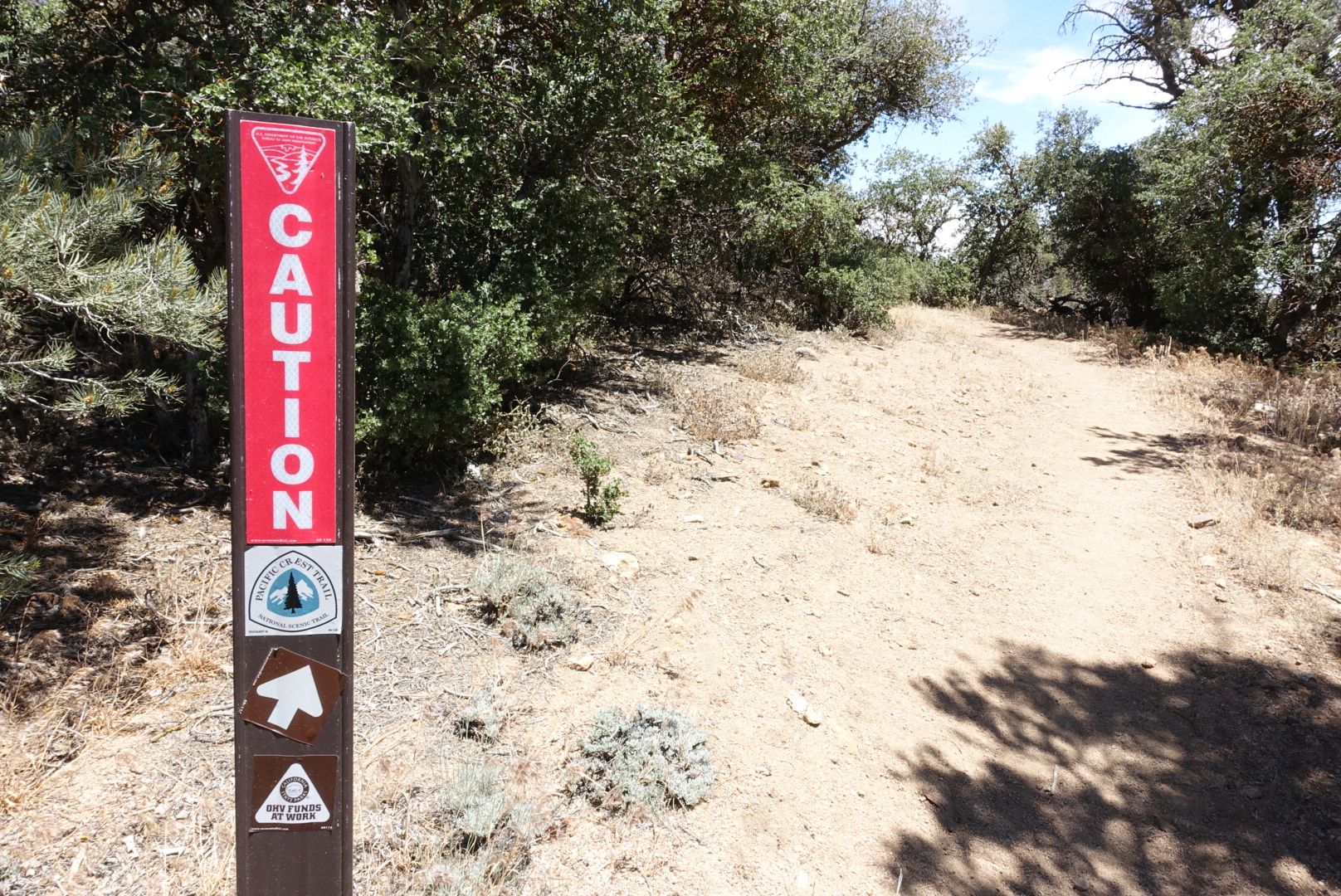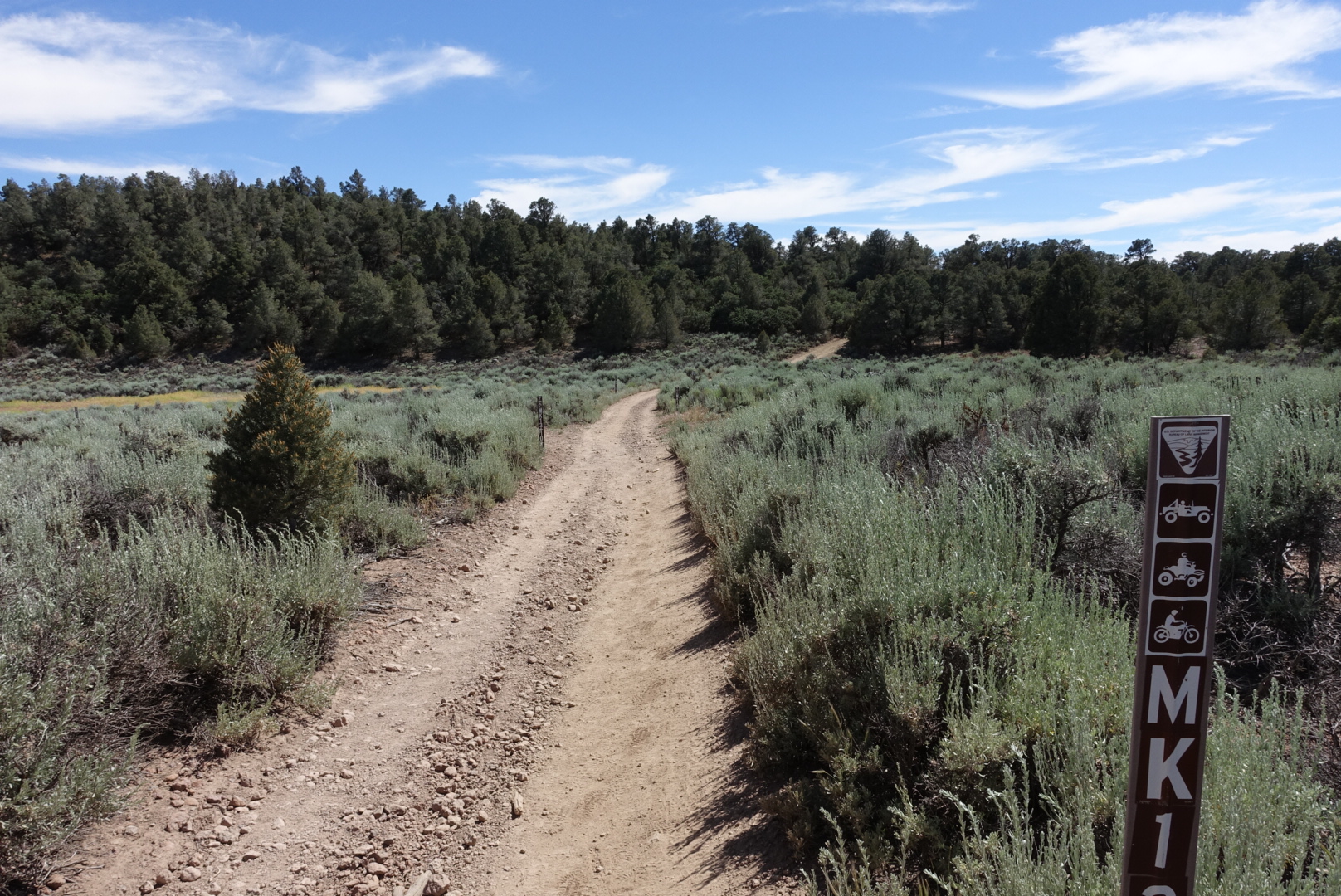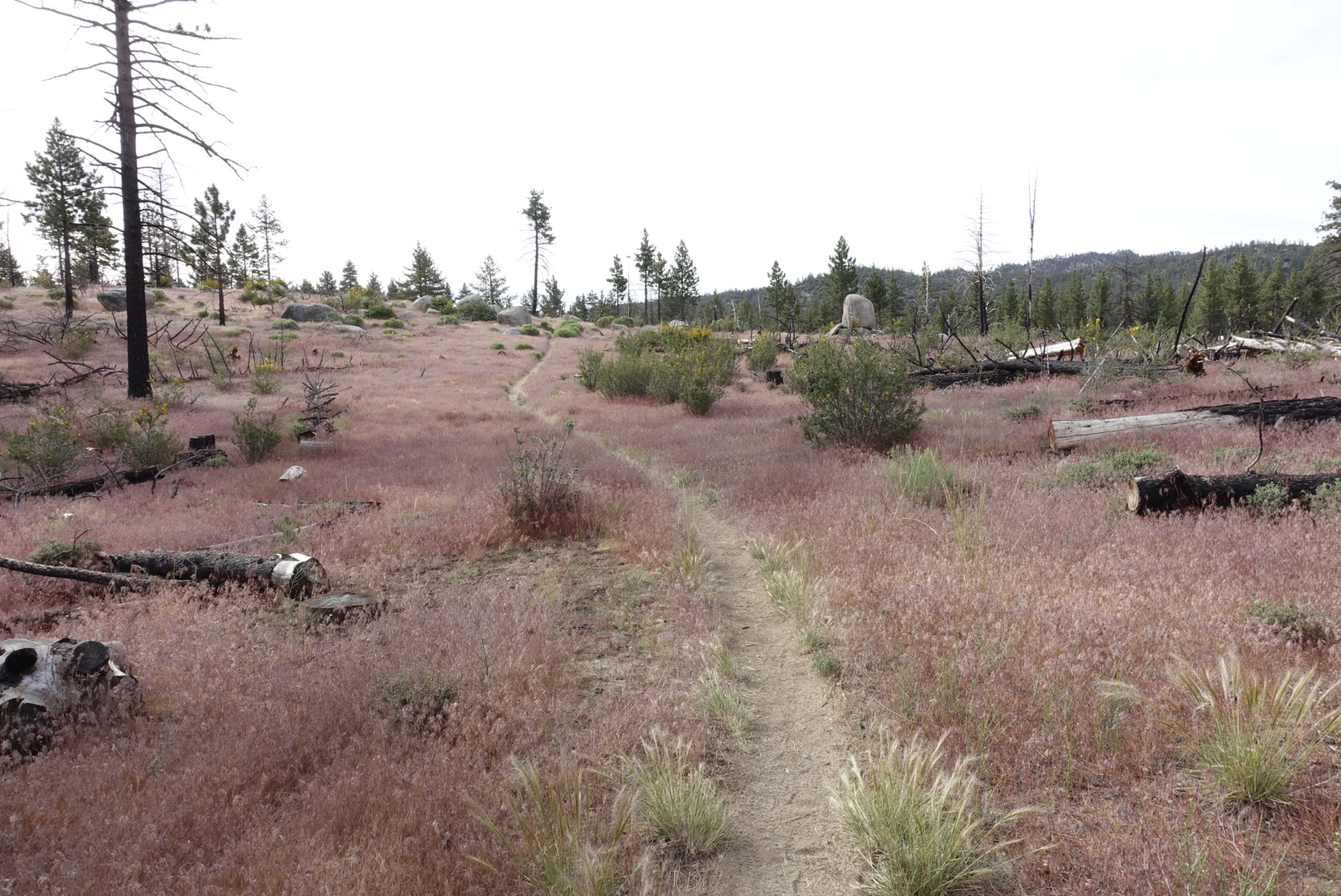
We started on the 42-mile dry stretch, and I thought back to the advice my haircutter gave me in Alpine: “You can go a month without food, don’t worry about food. But water…”
You’d think such a dry trail would be devoid of life, but there are many desert-adapted plants and animals that can go quite some time between drinks. Rather than the rolling sand dunes and saborro cactuses that people tend to expect in the desert, there were many trees and flowing plants that ignored my haircutter’s advice.
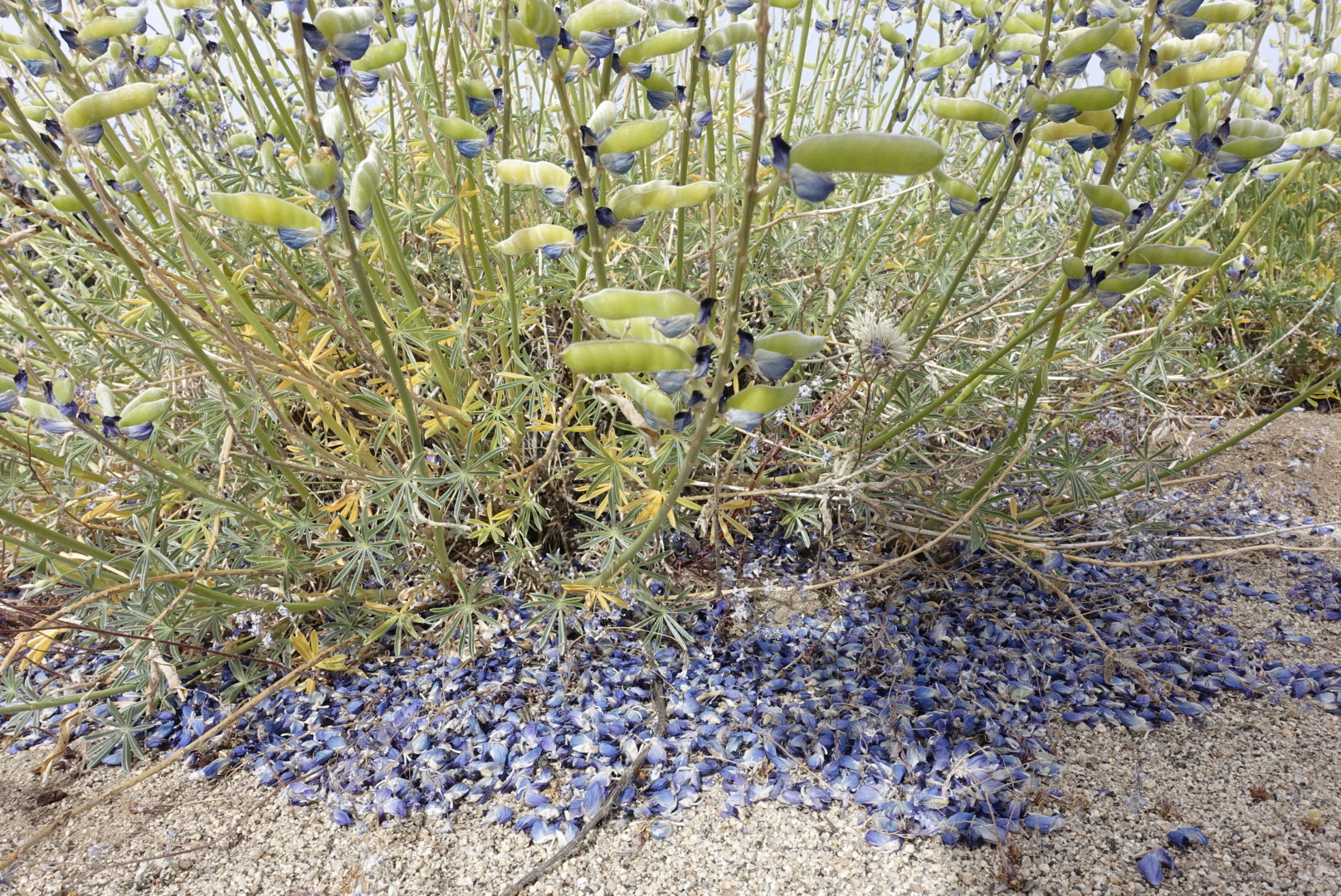
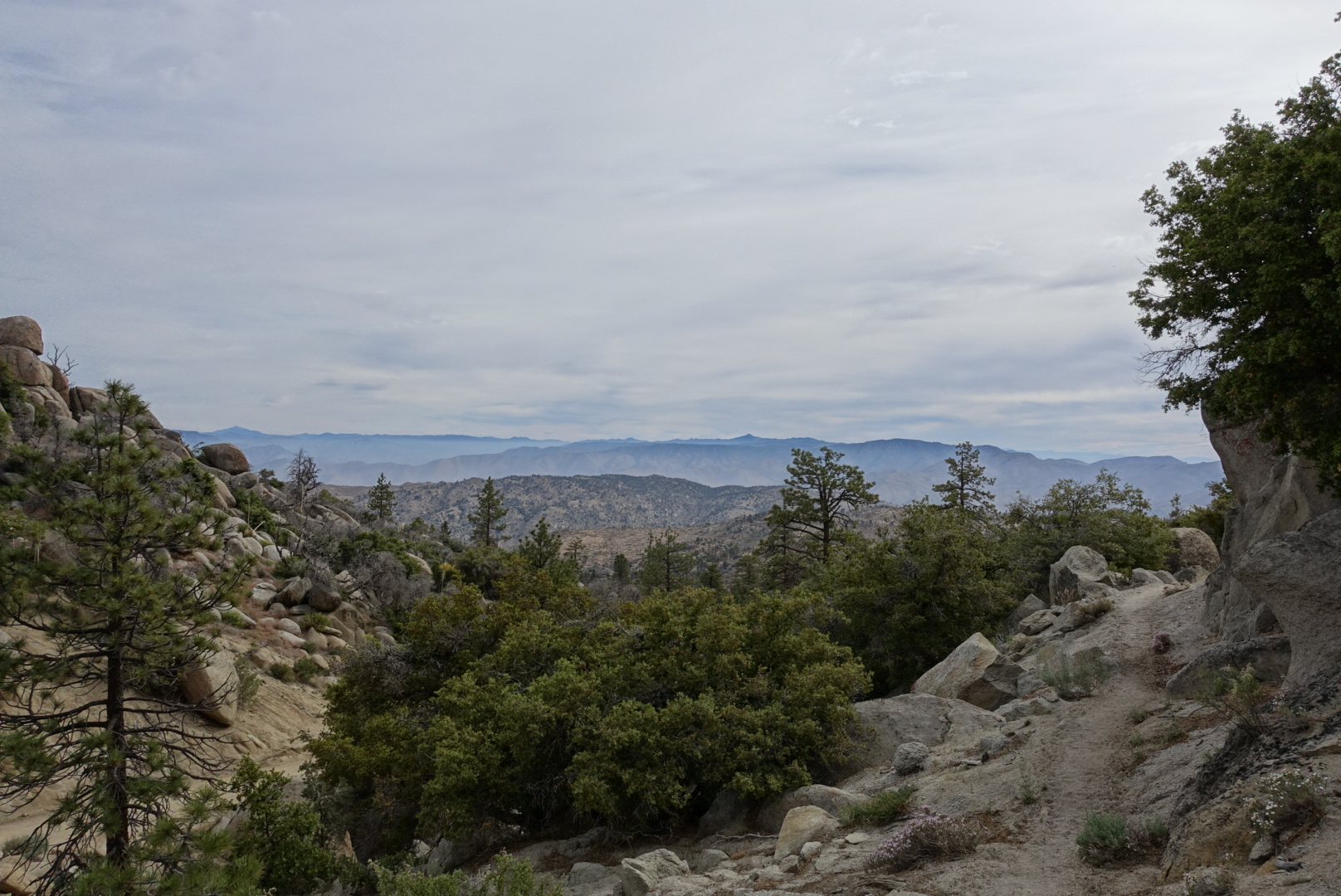
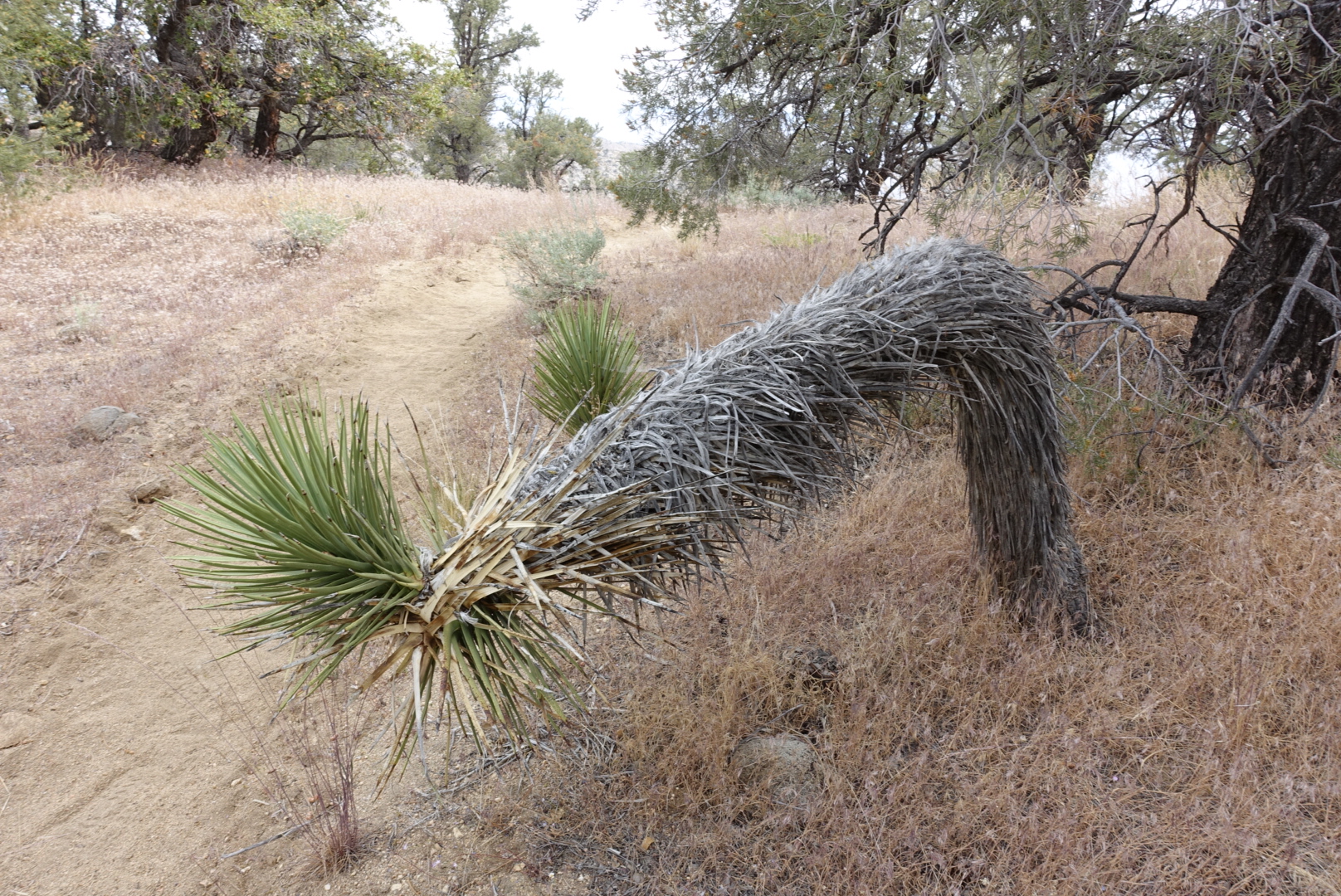
As trail angel Siri had said, there was a large water cache at mile 615, making this desert much easier on us than on the dessicated flowers. But, as luck would have it, just as we were finishing filling up our water reserves, Siri’s familiar grey SUV pulled up. He gave us crisp, cold Pepsi and snacks, and we chatted about the conveniences of hut hiking, such as they have in Norway.
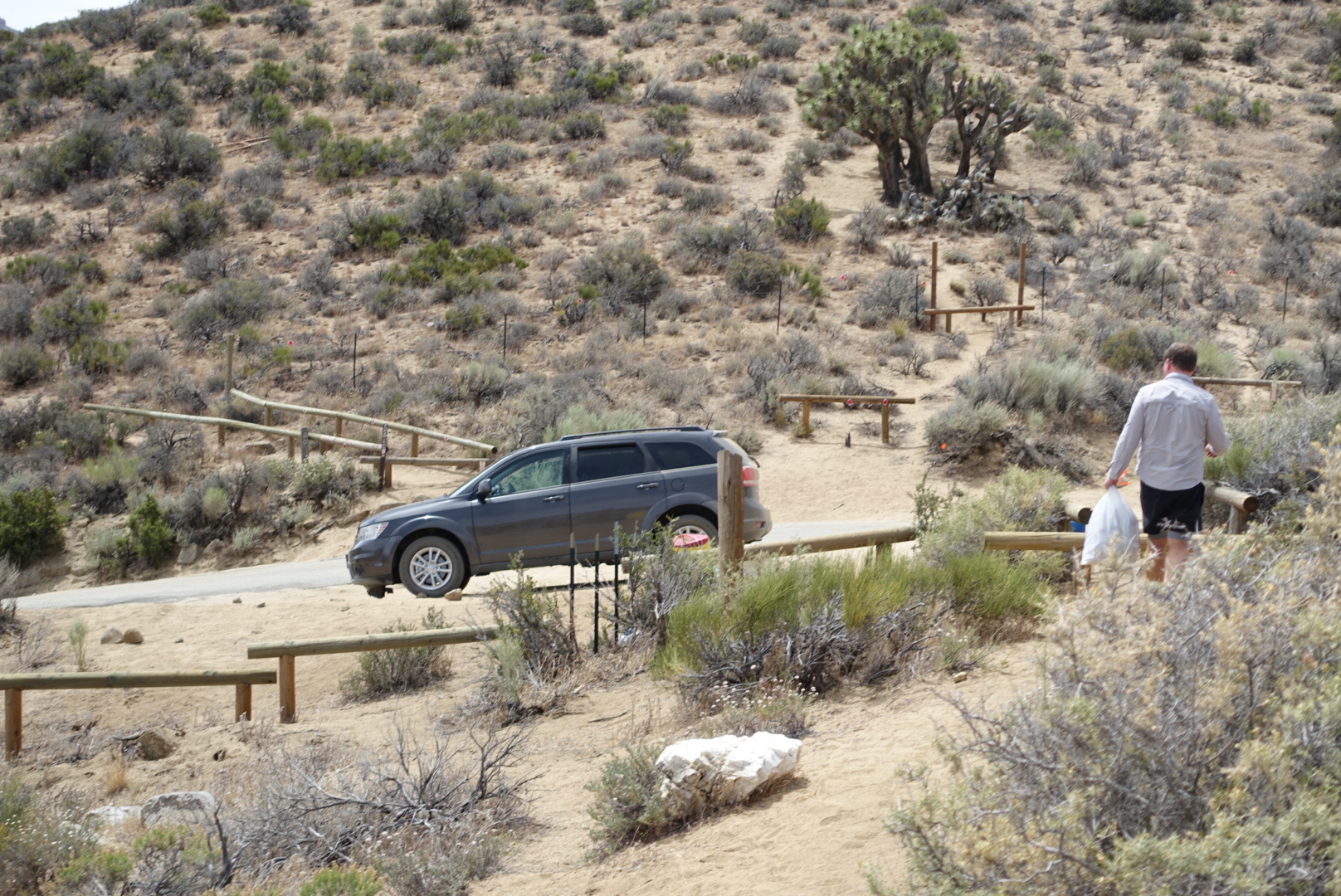
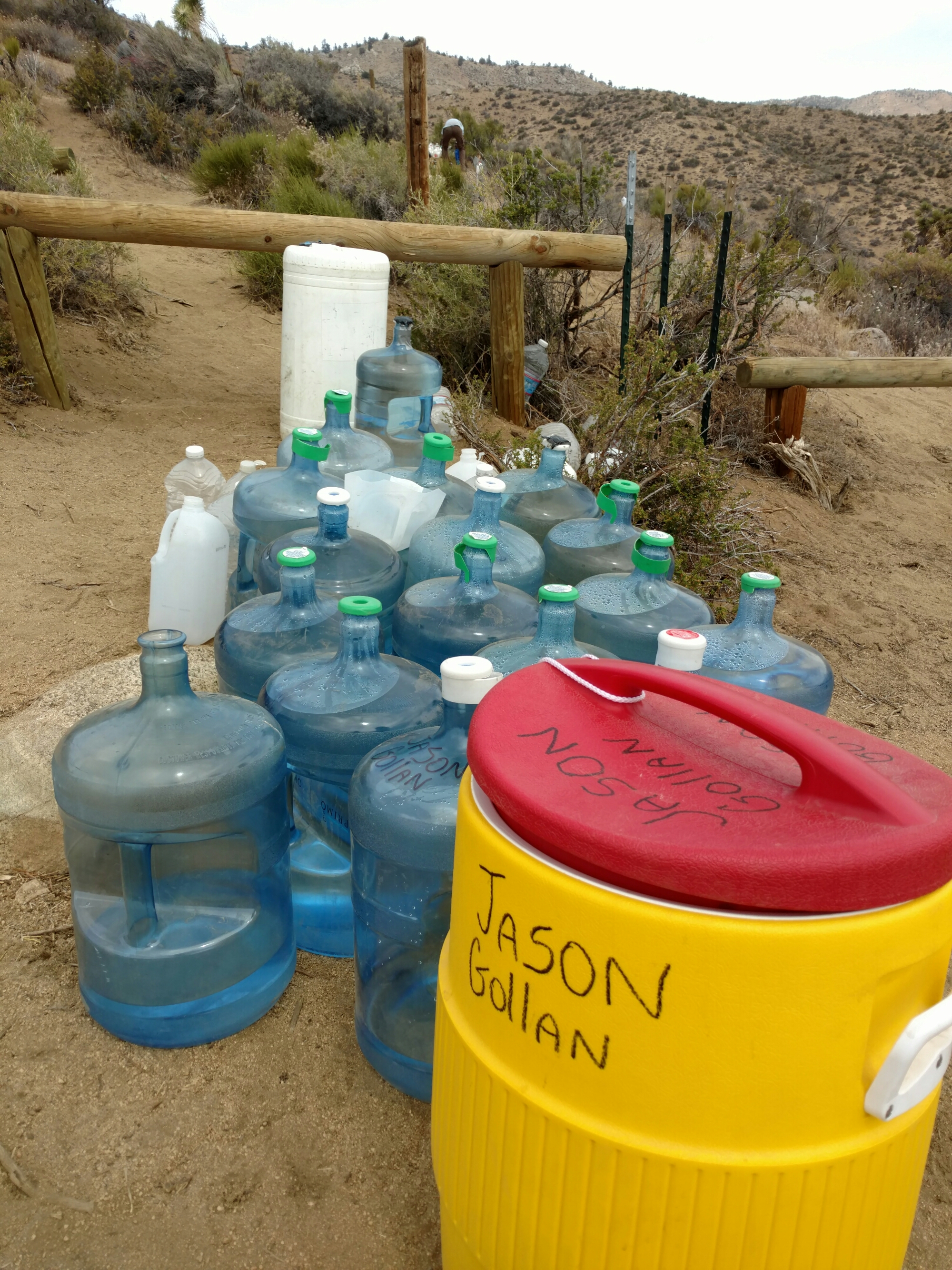
Past 615, it got drier and more tumbleweed-heavy, conforming to a desert stereotype.
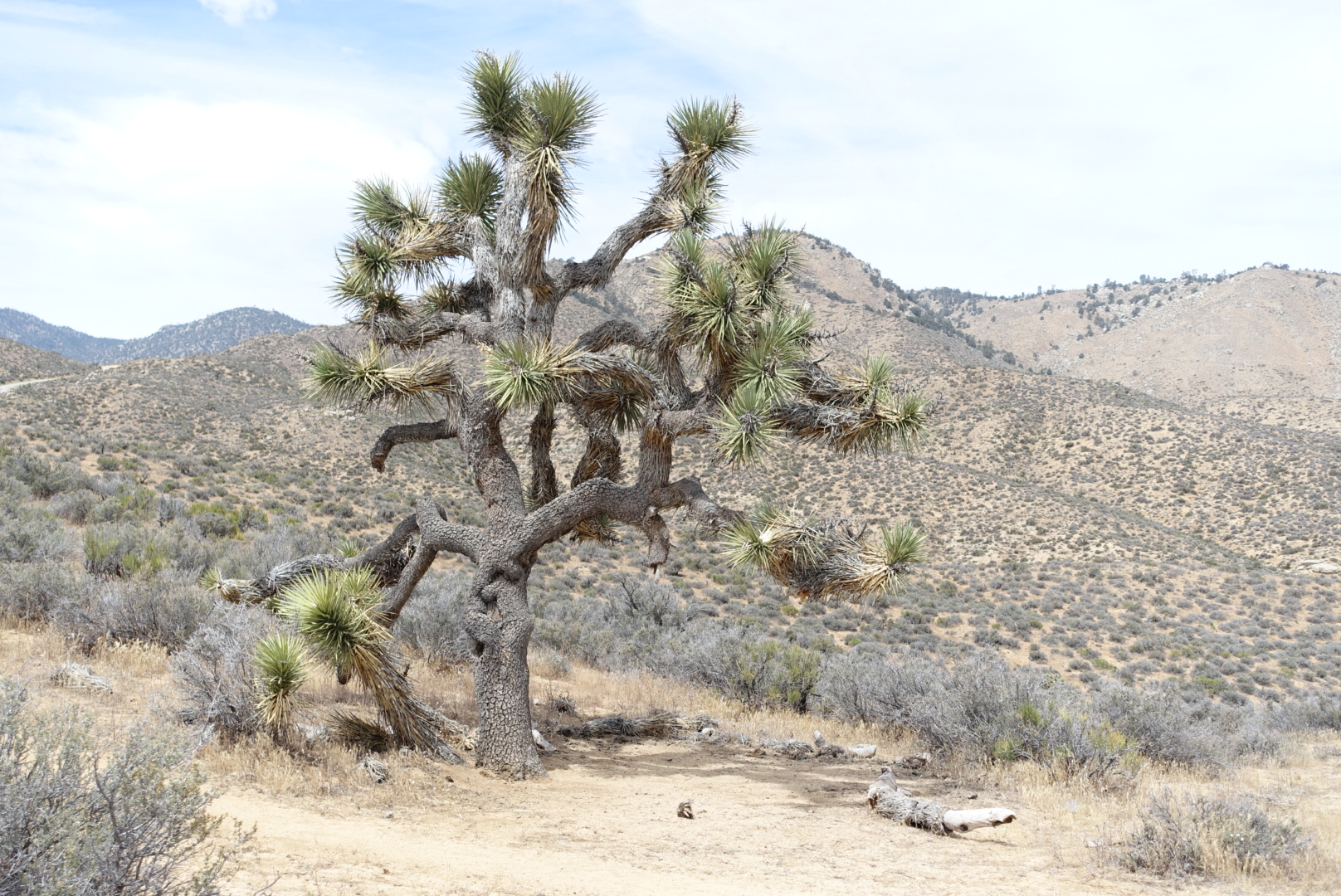

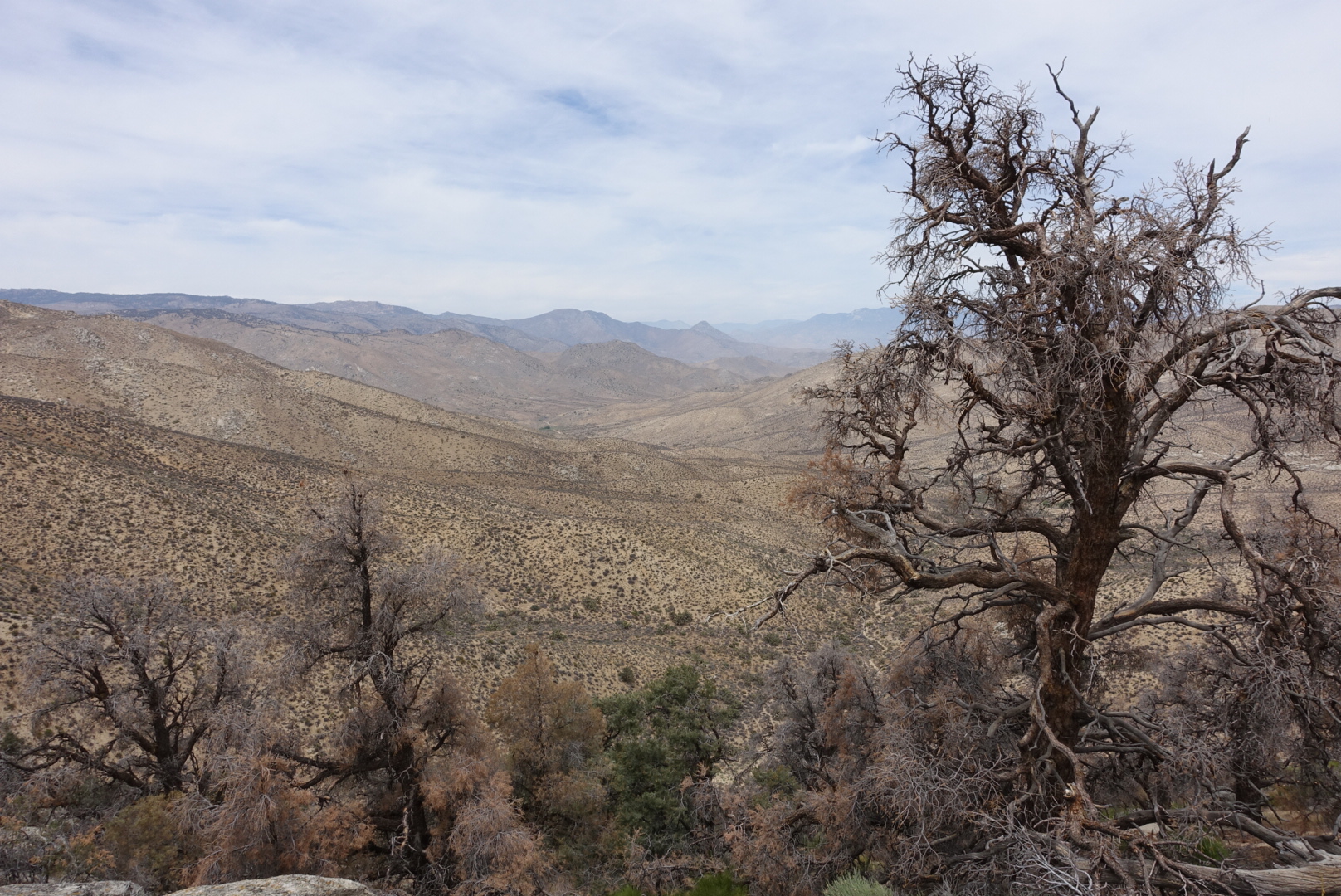
Even way out here, though there was evidence of human activity, in the form of an abandoned gold mine. I stood on the edge and looked in, and couldn’t see the bottom. But, with appropriate settings on my camera, i could see to the bottom..

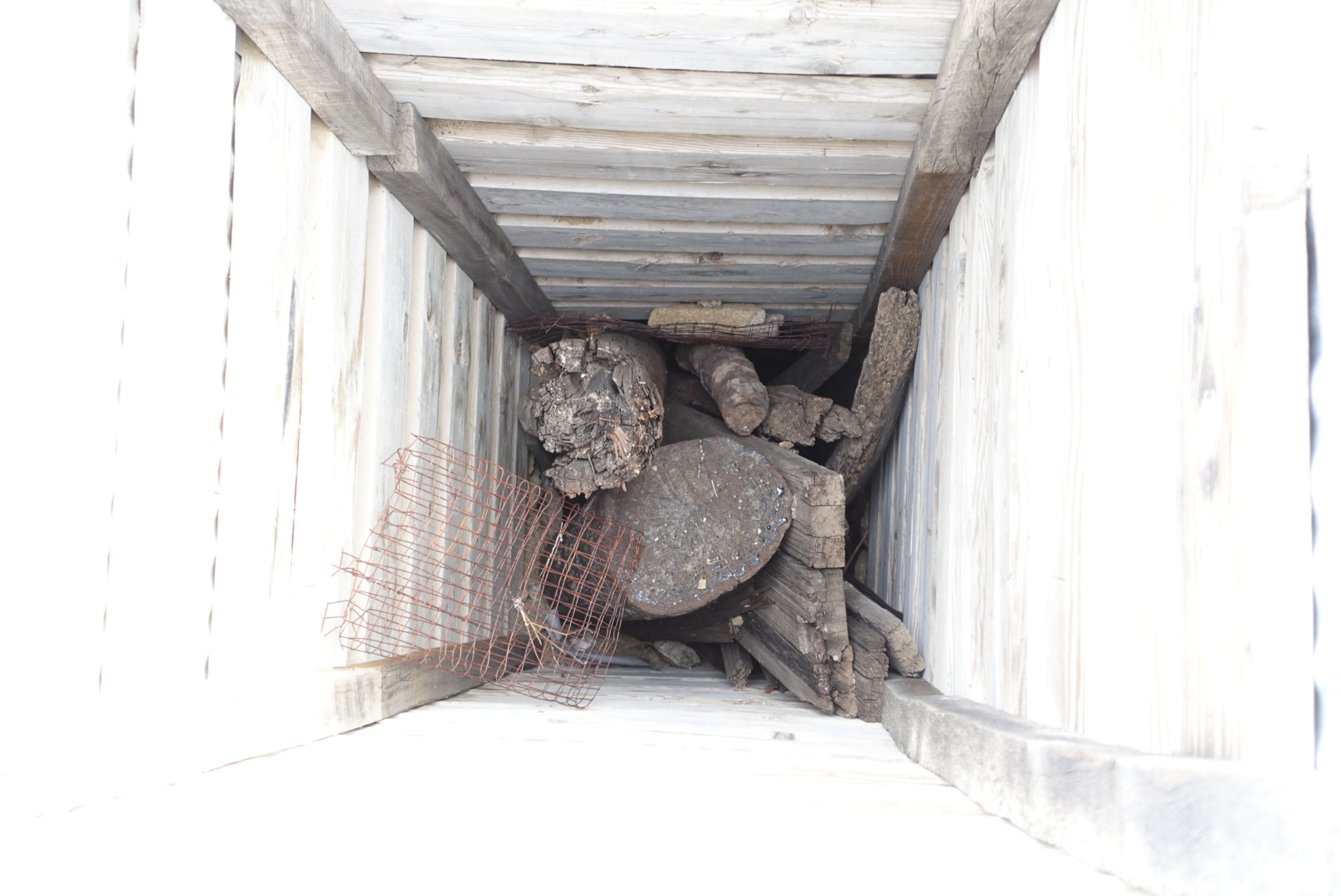
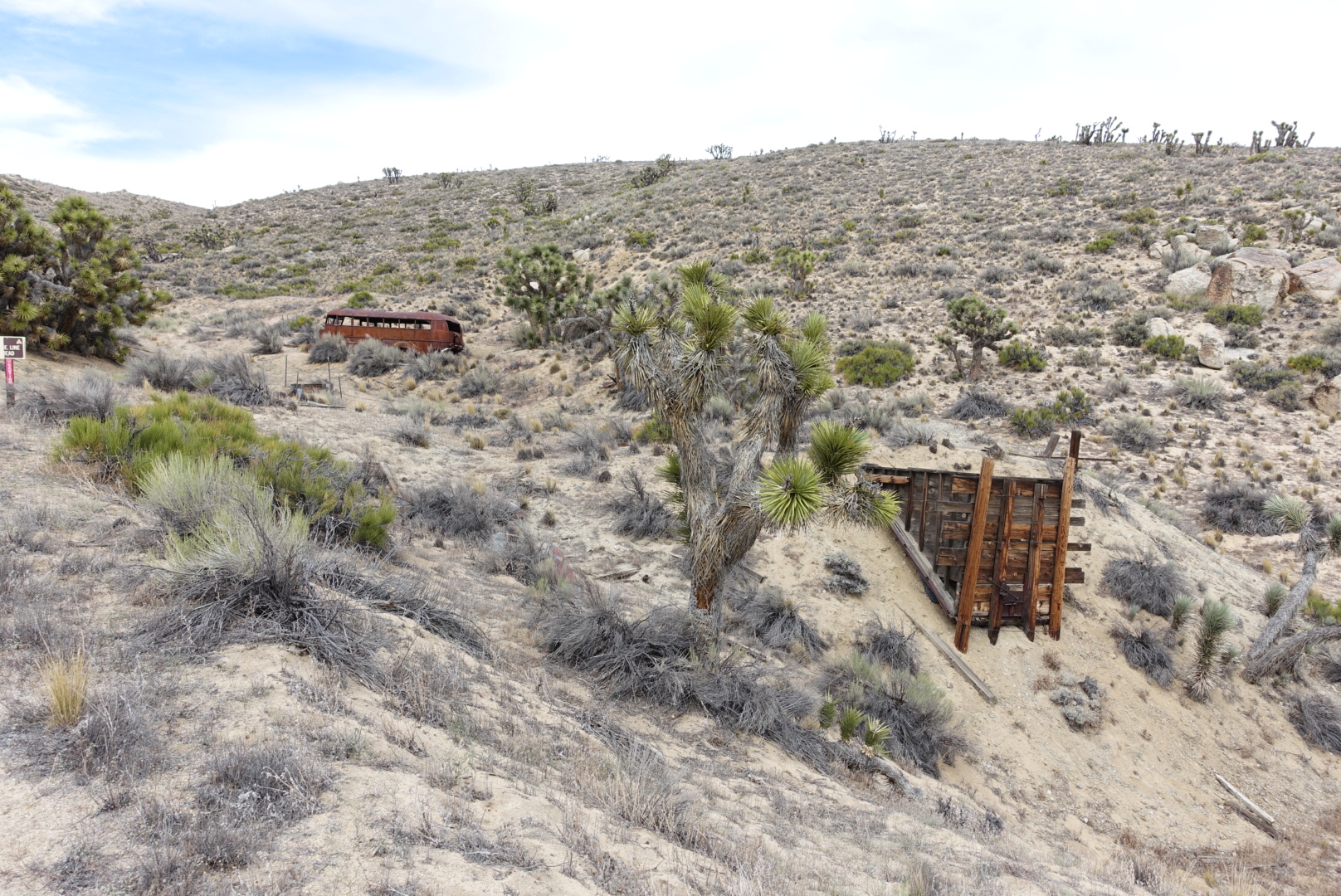
Between the two shafts, somebody had taken the time to abandon a school bus out here.
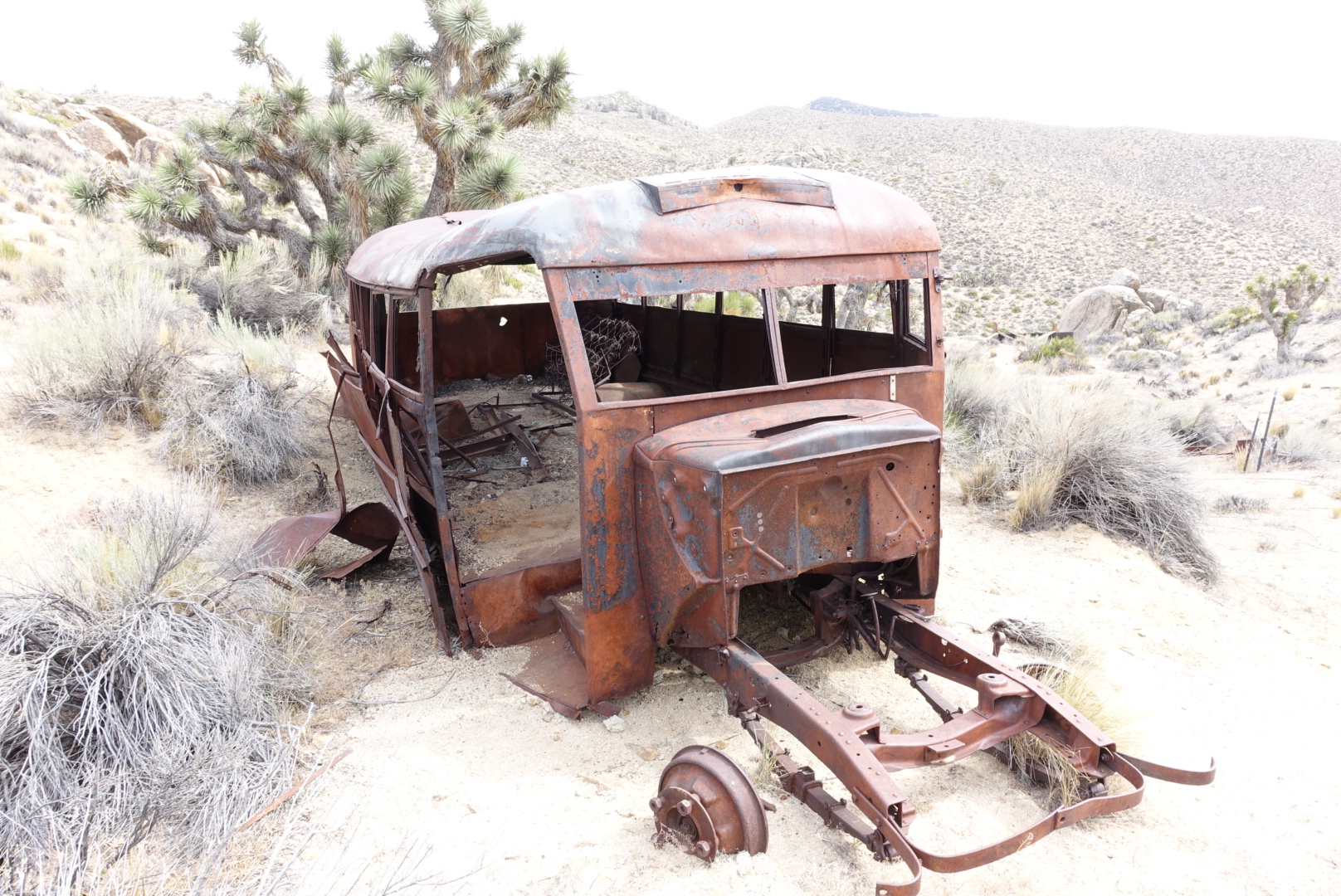
In the distance, there was an abandoned truck downhill. Further uphill, there was an abandoned ’60s Cadillac.
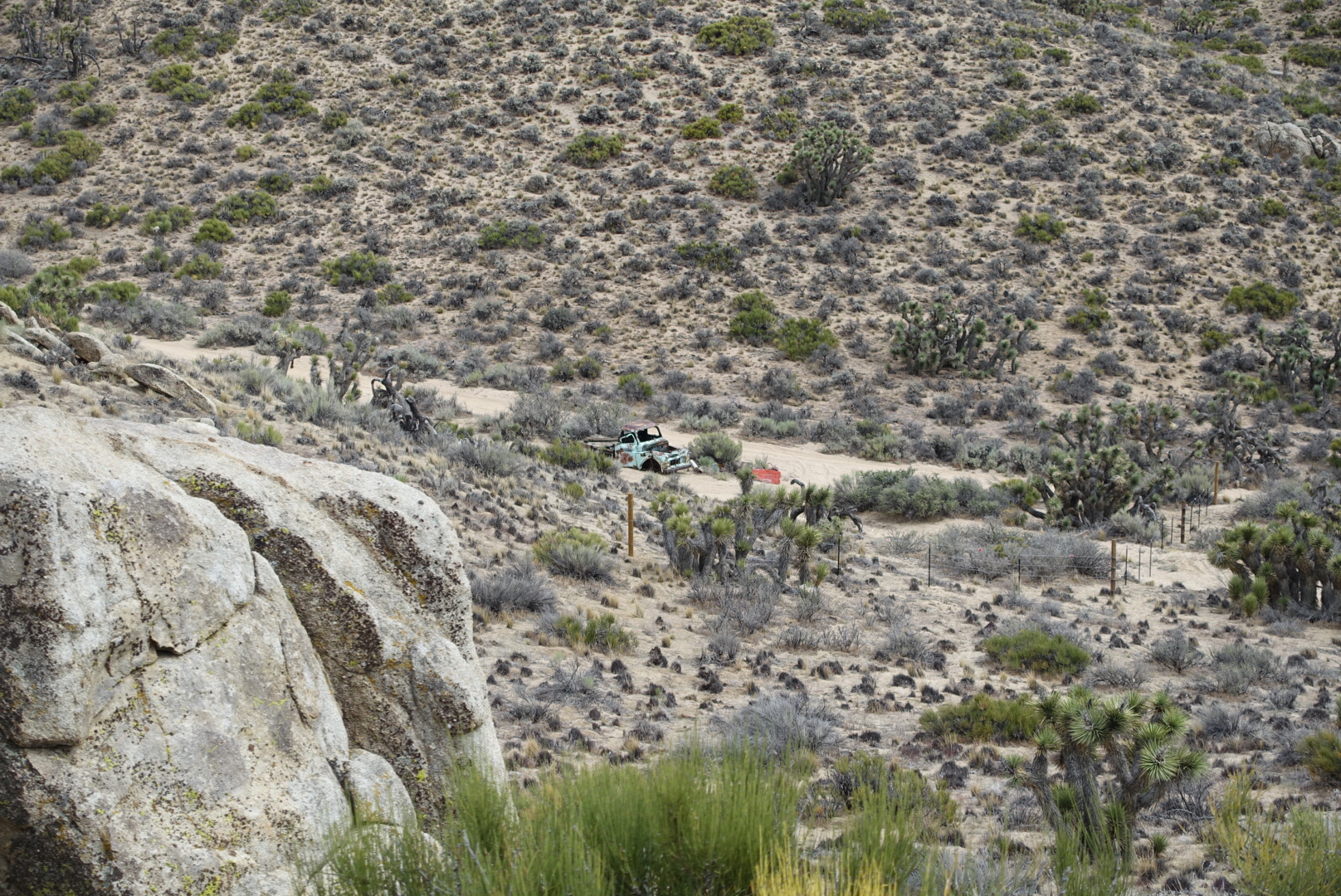
Further down the trail, we reached mile 630, a road crossing with the next water cache. About a dozen hikers were camped here, so they’d have access to water all night. We set up here too. And why not? The sun was setting over the mountains westward.
